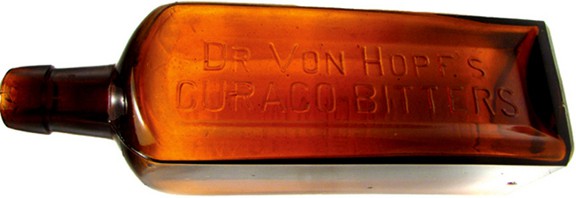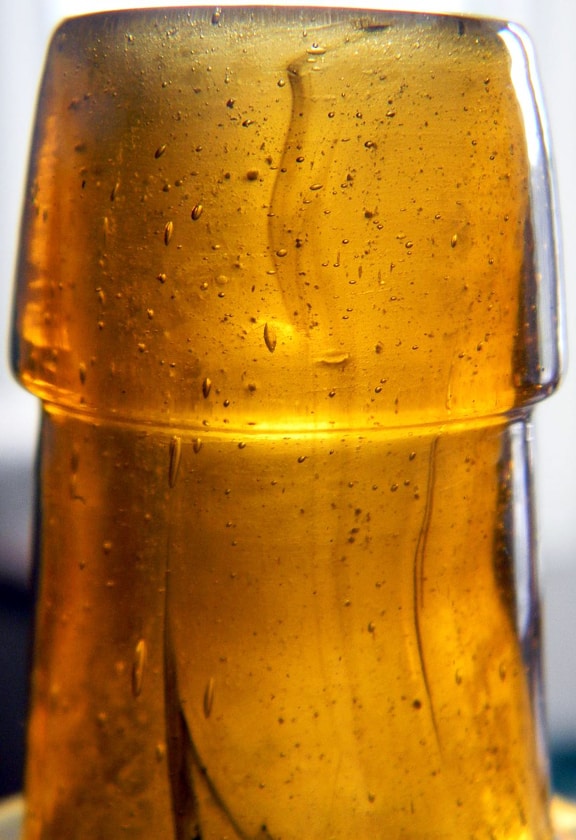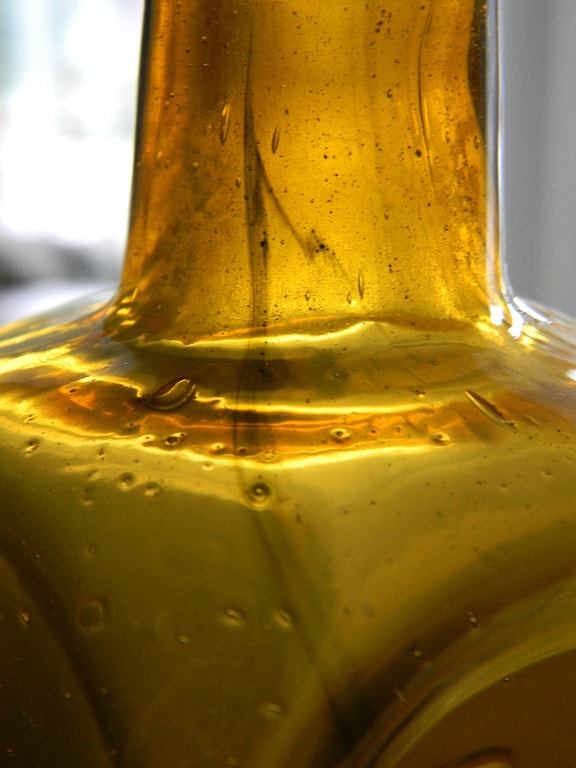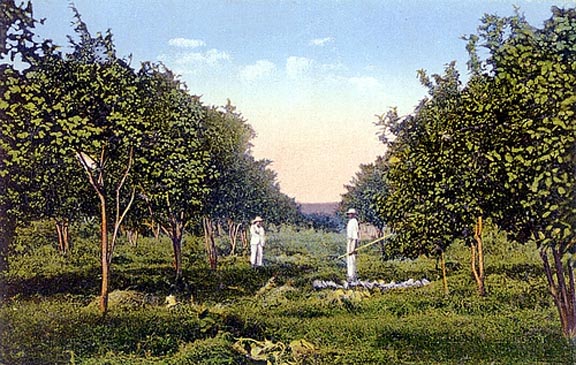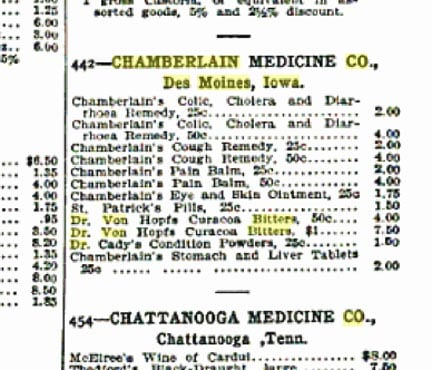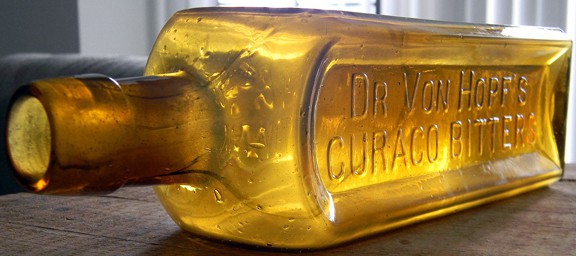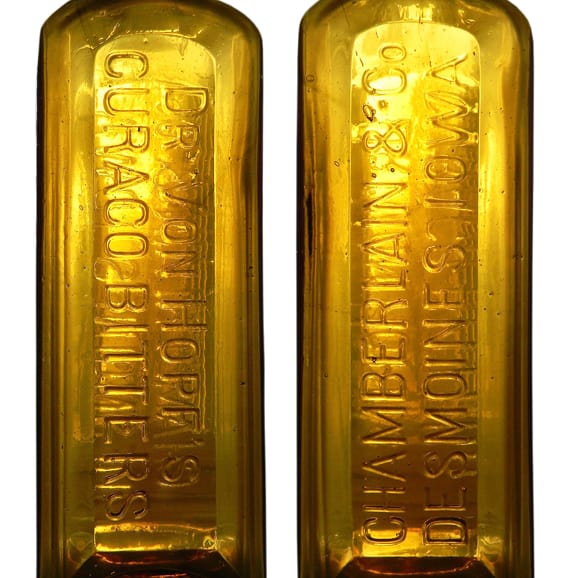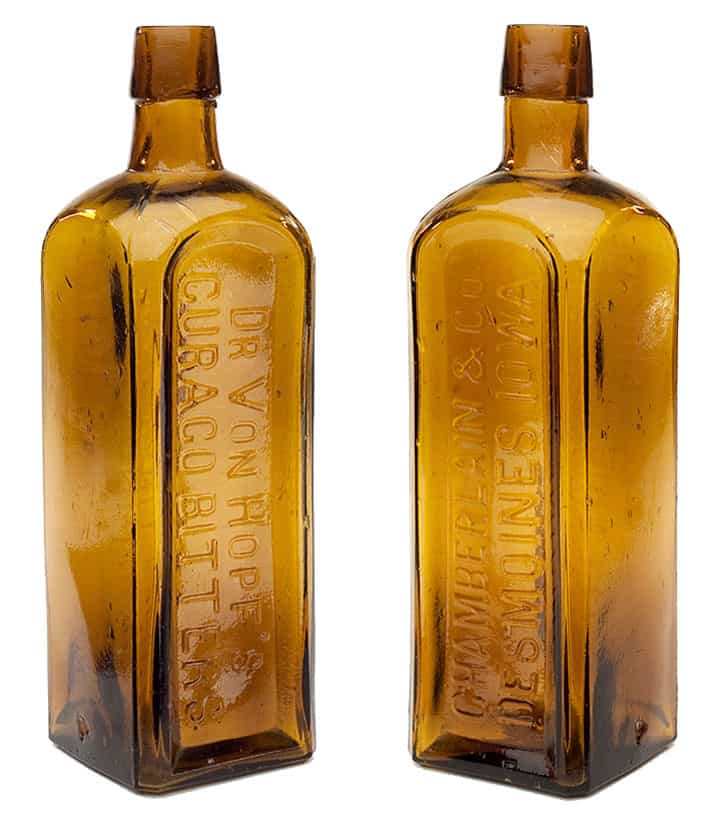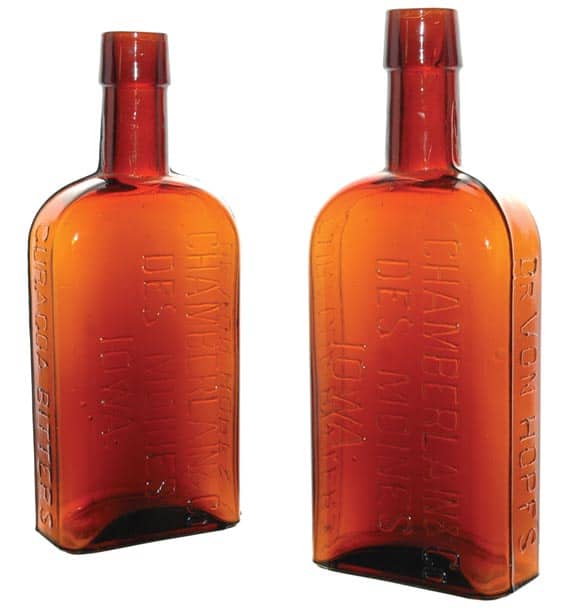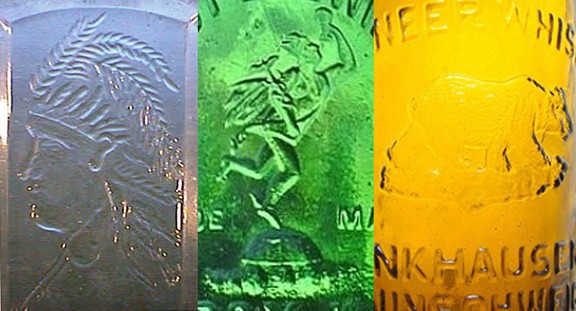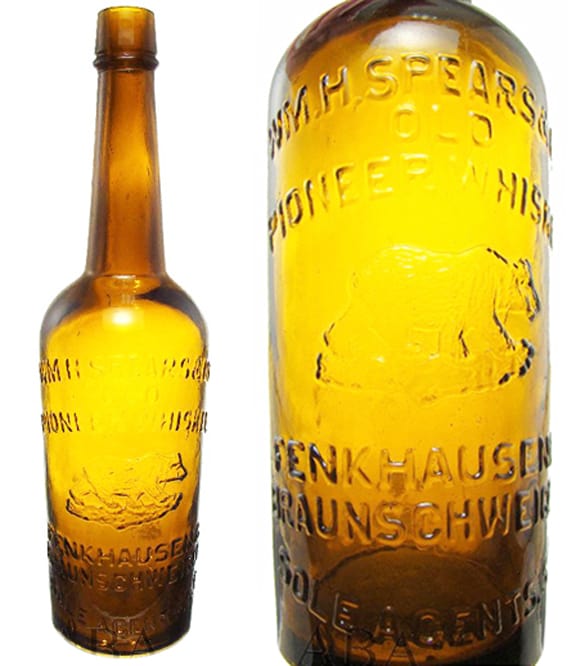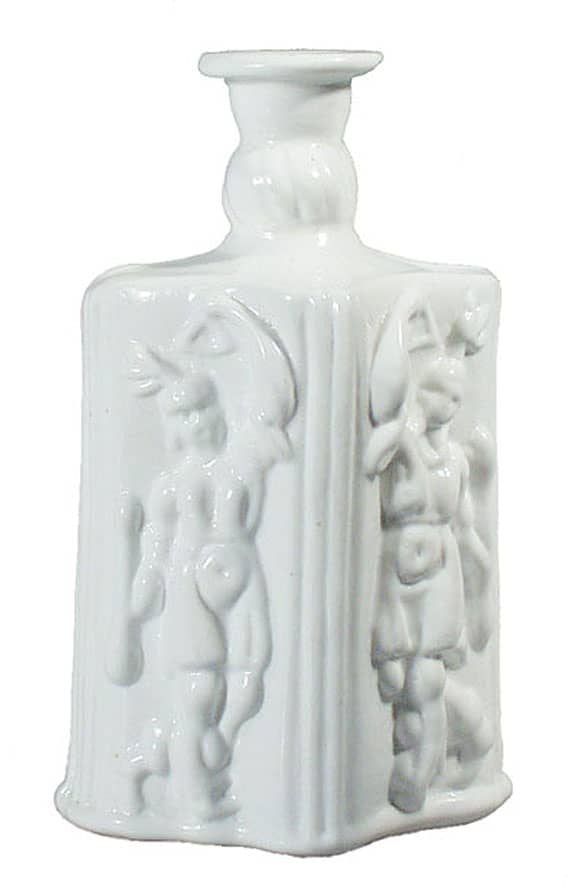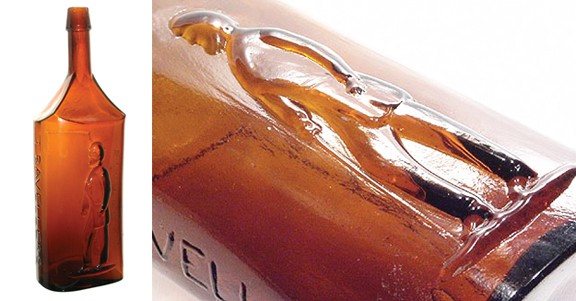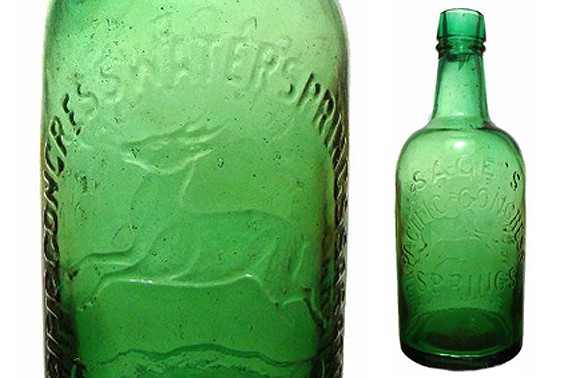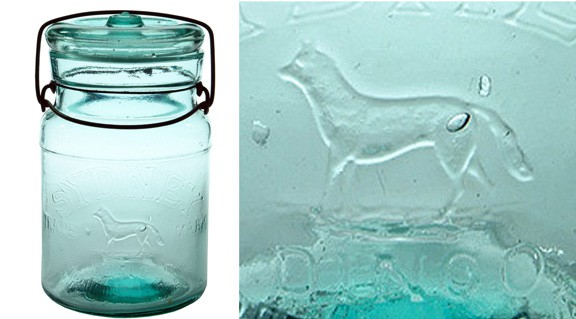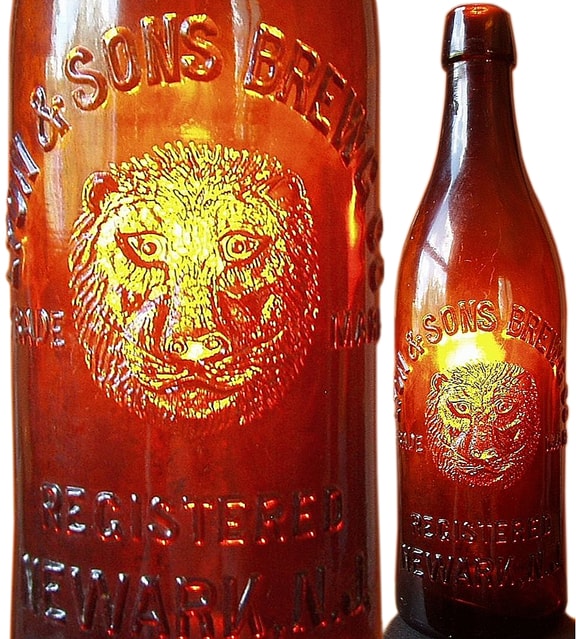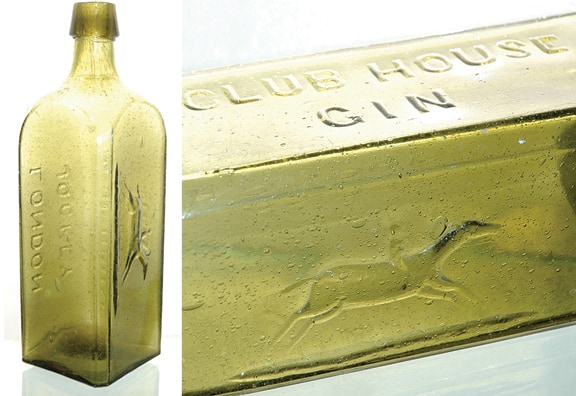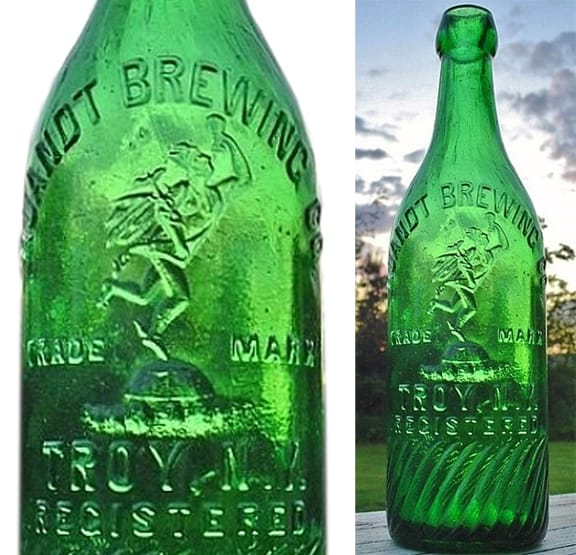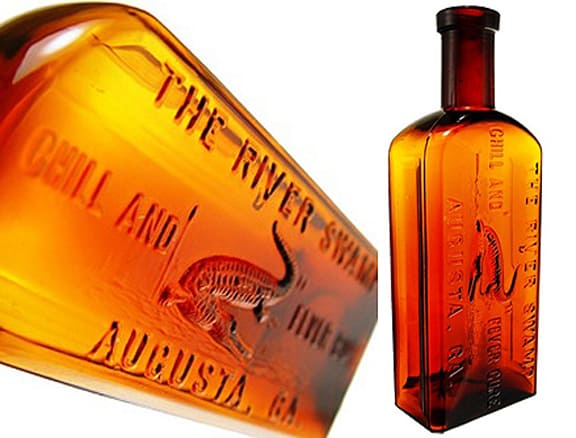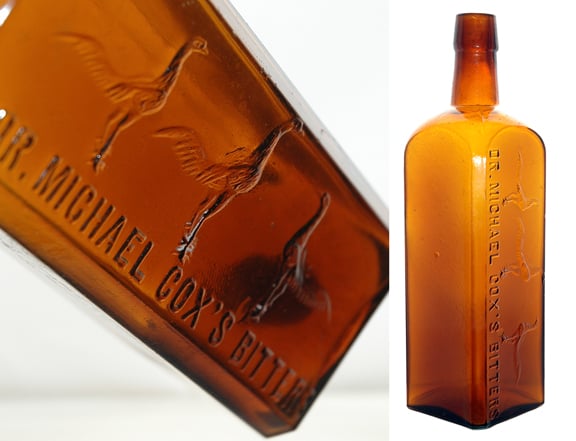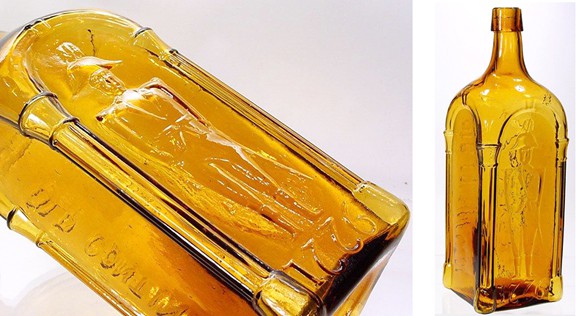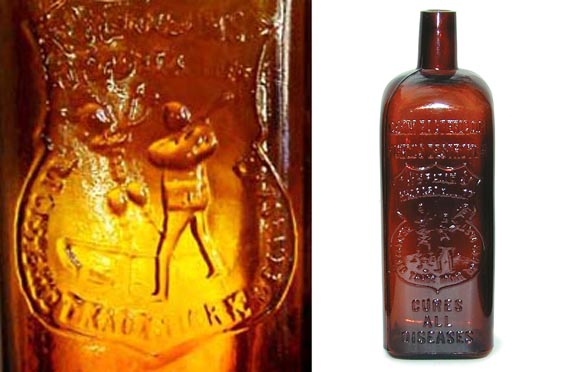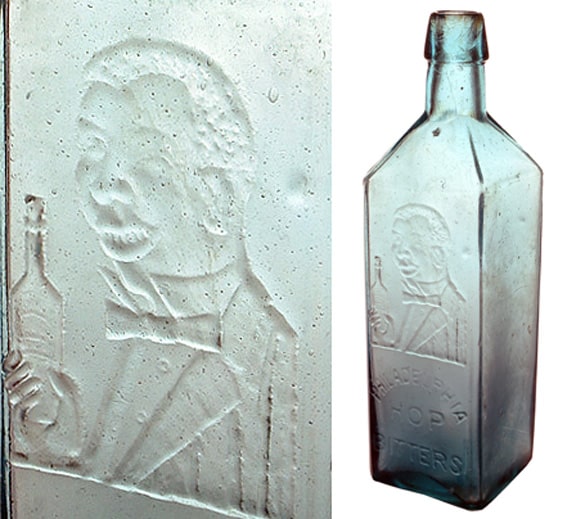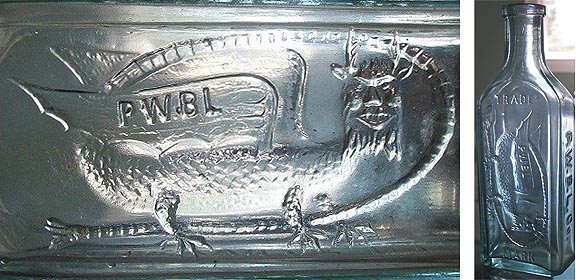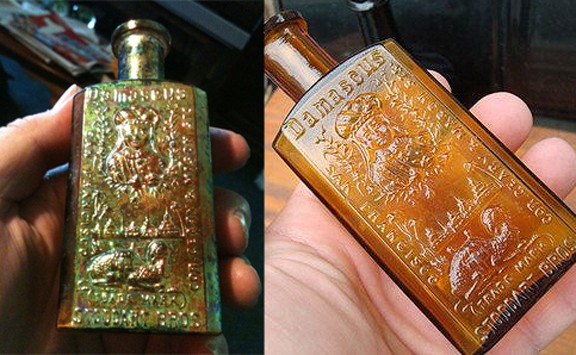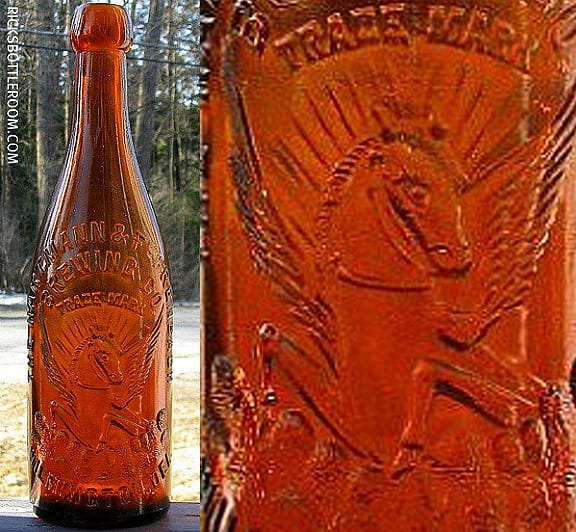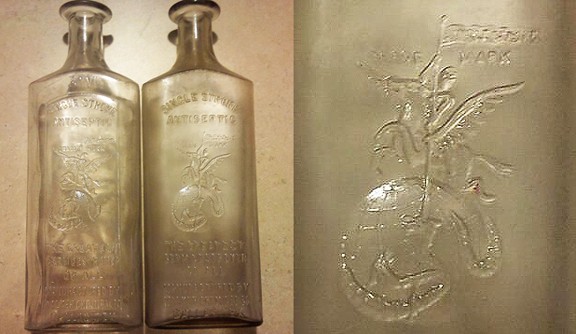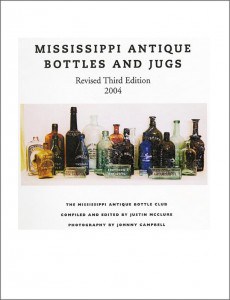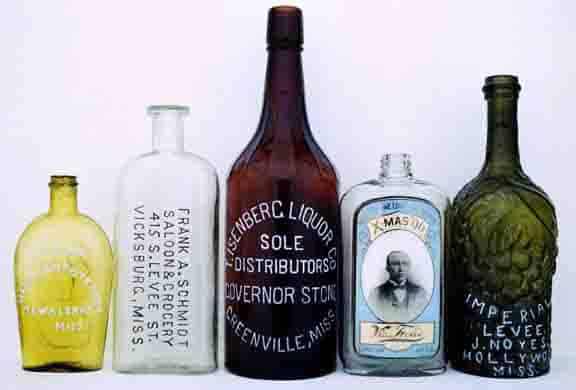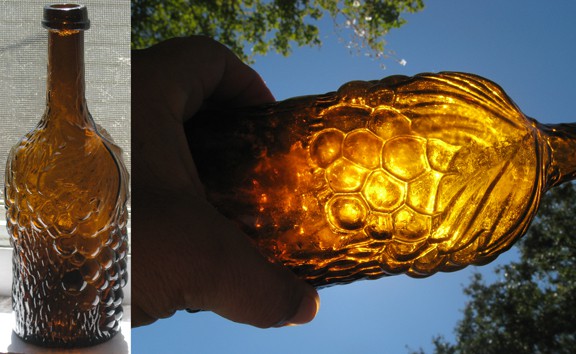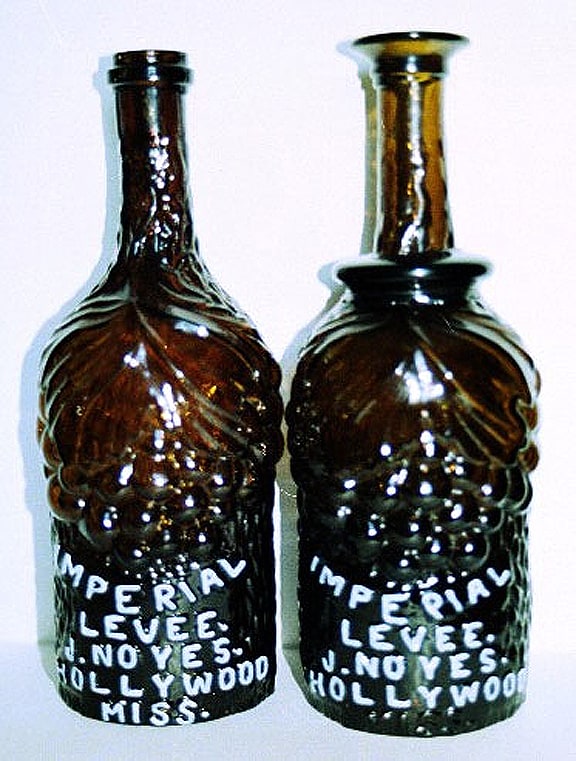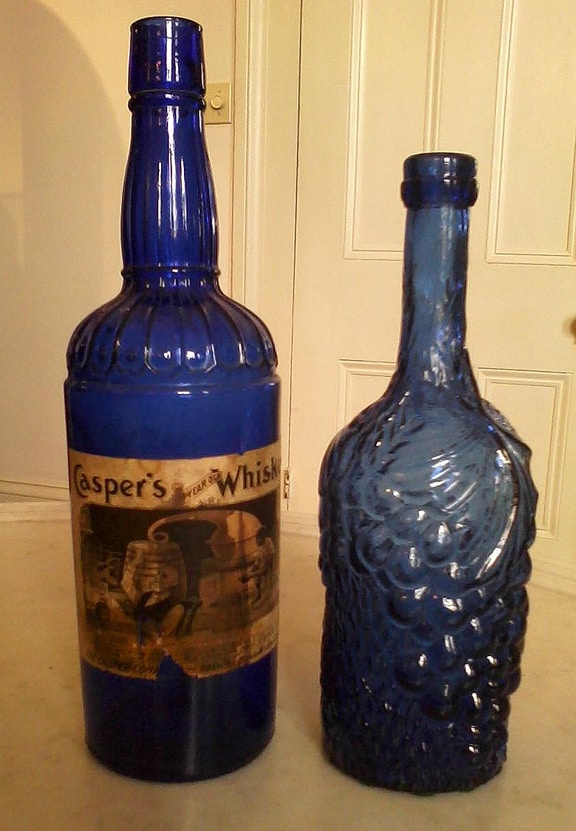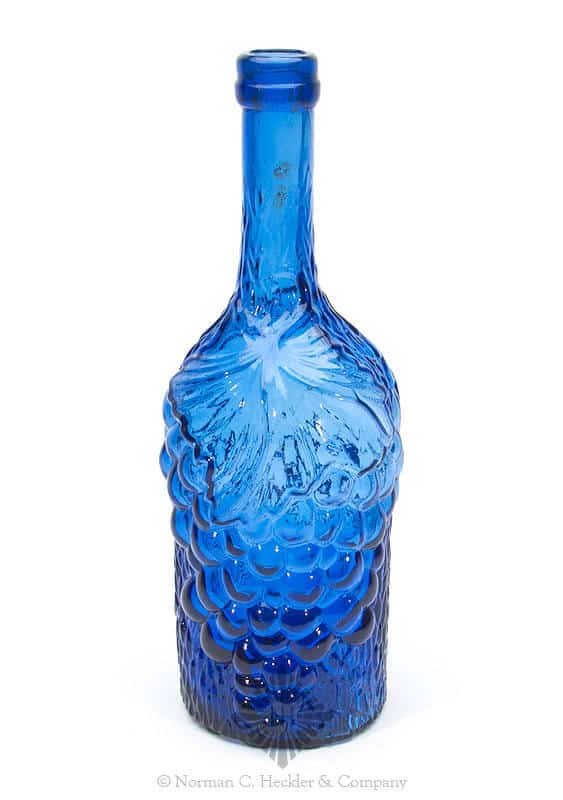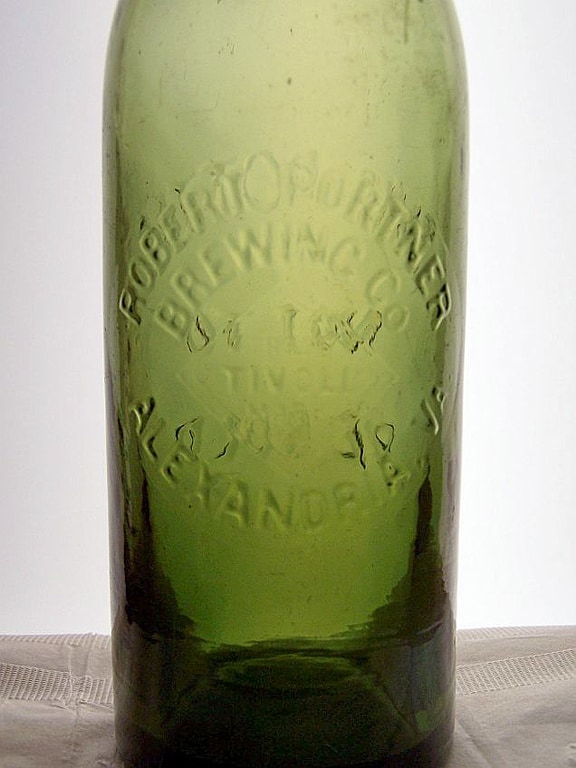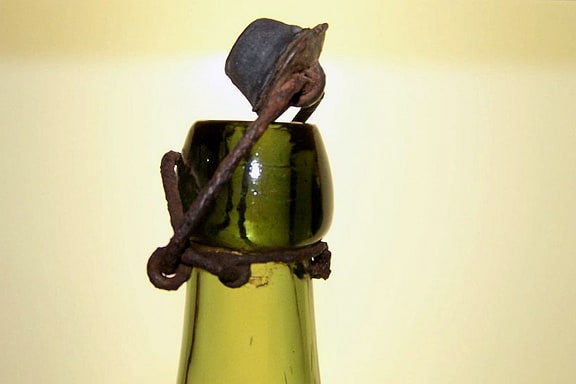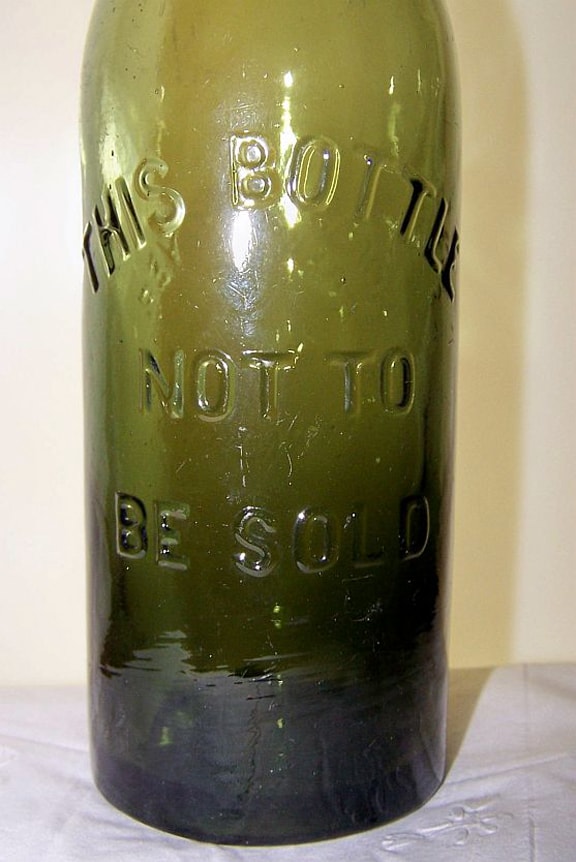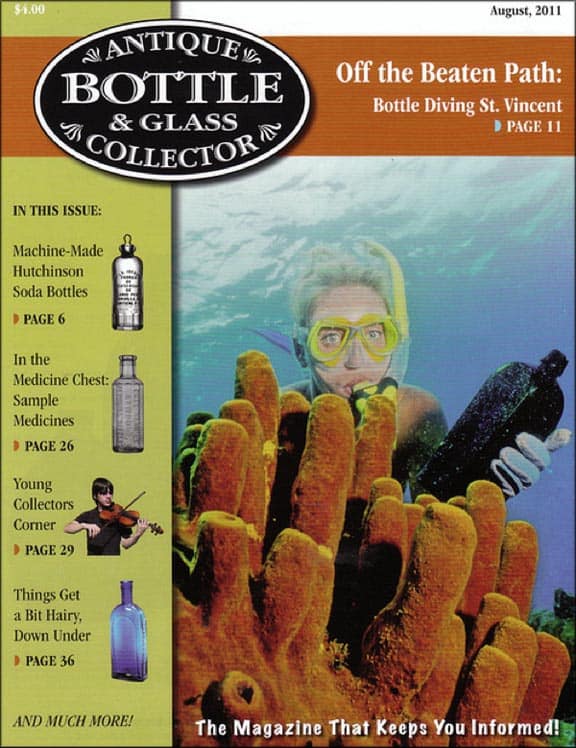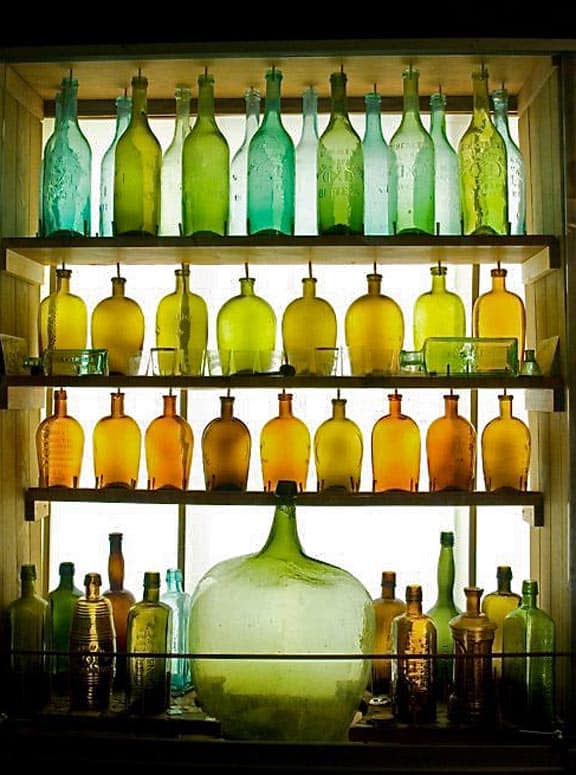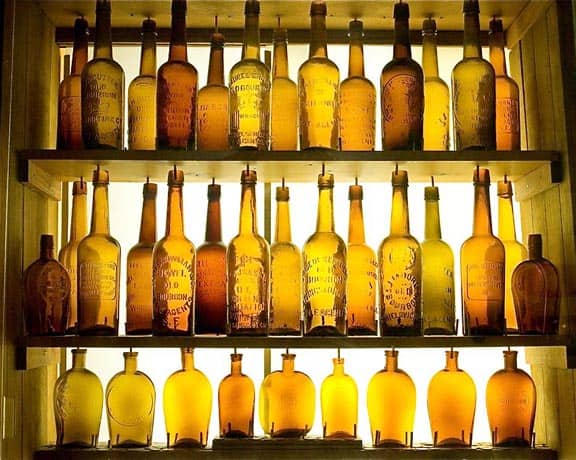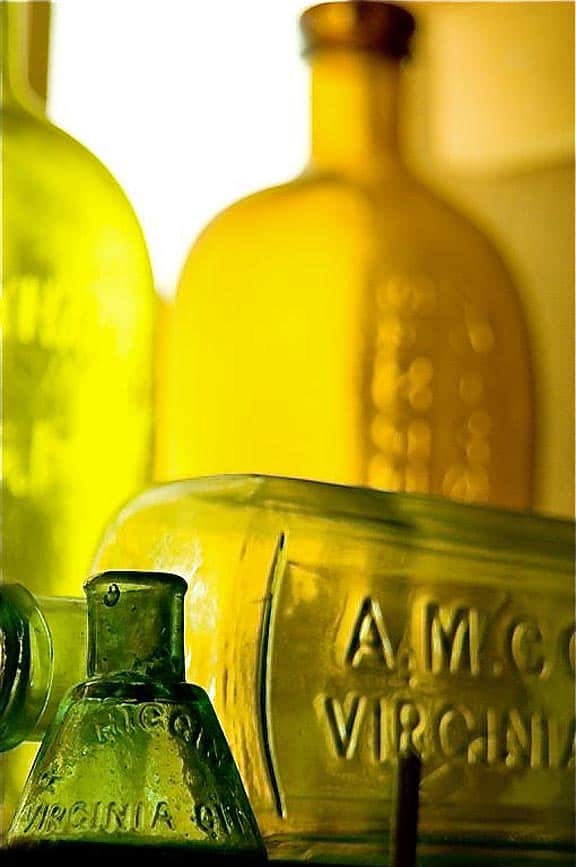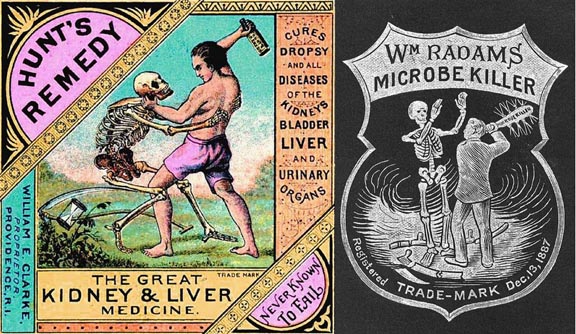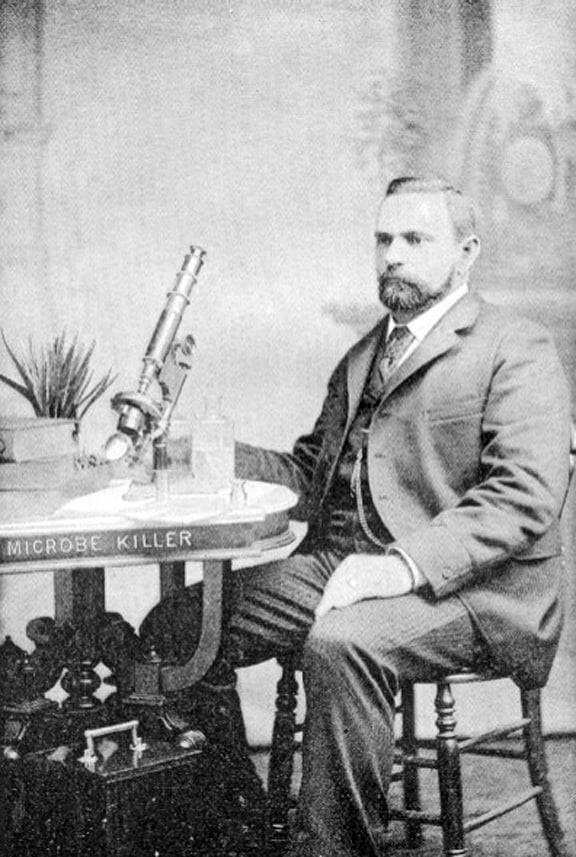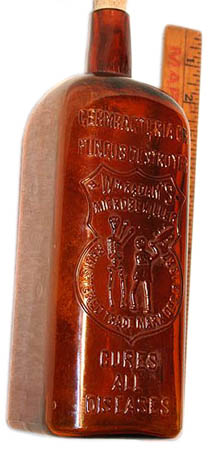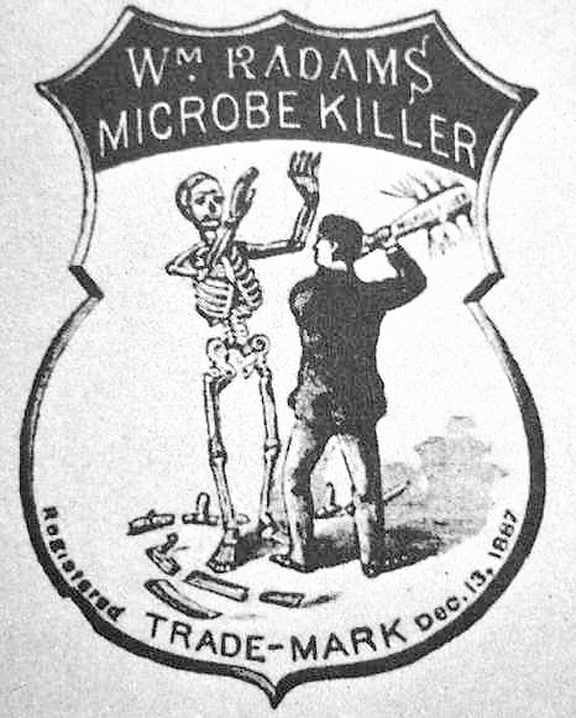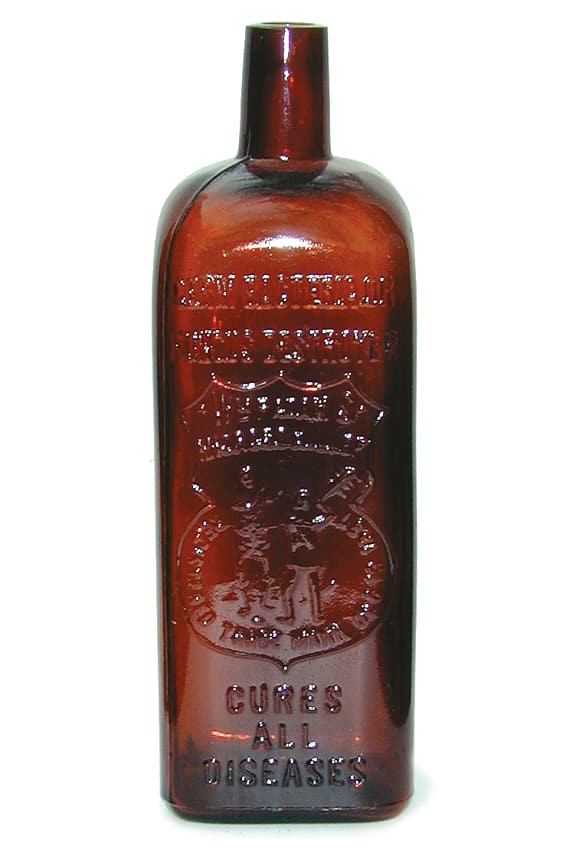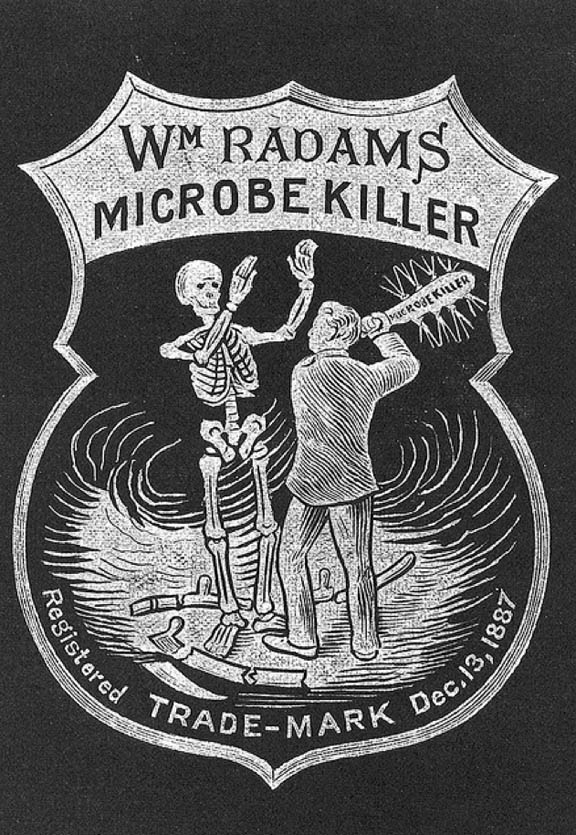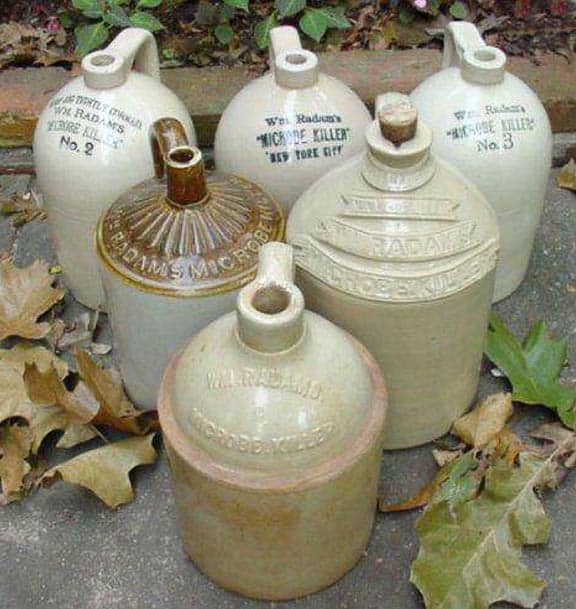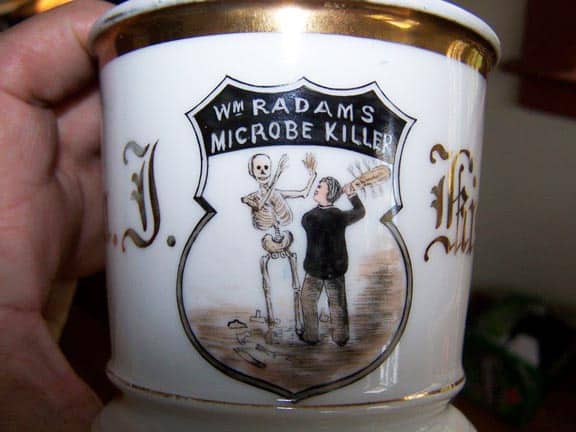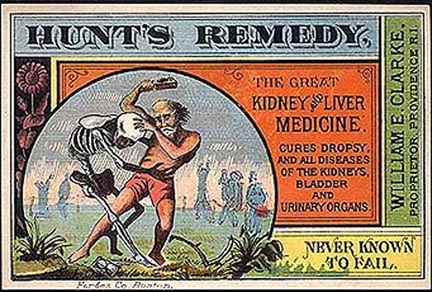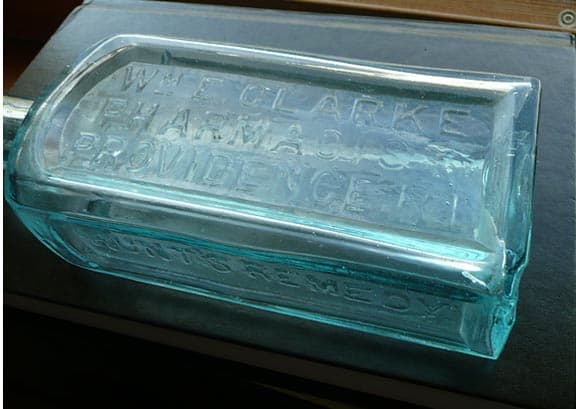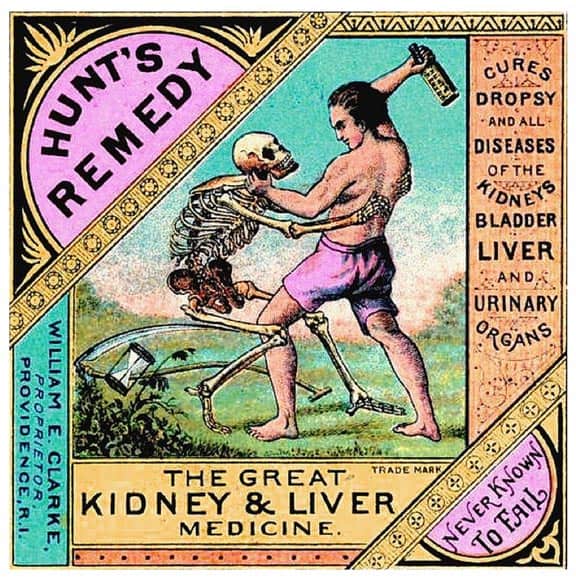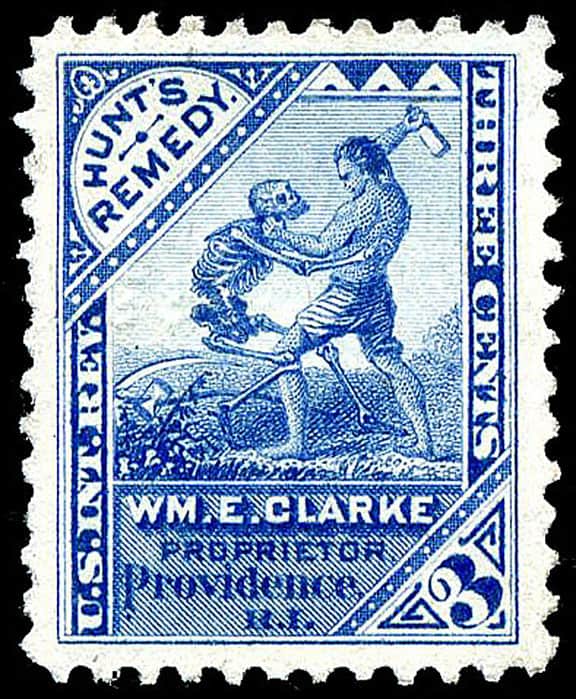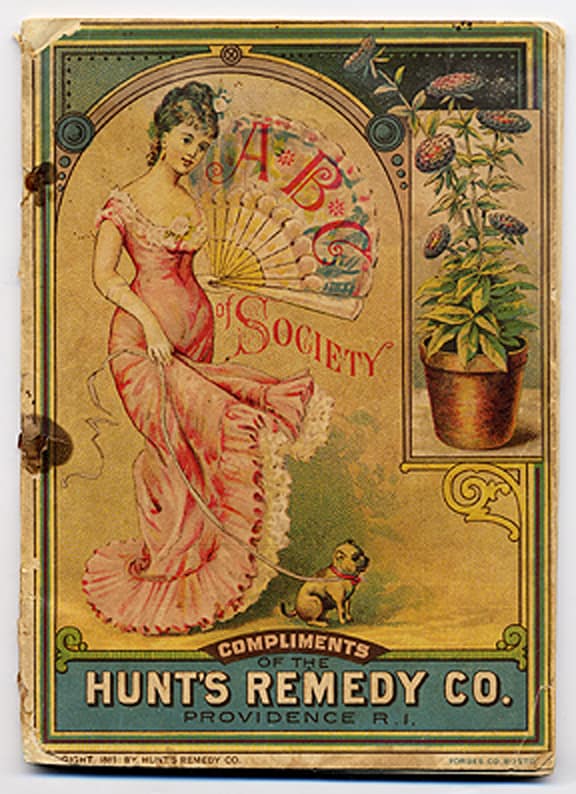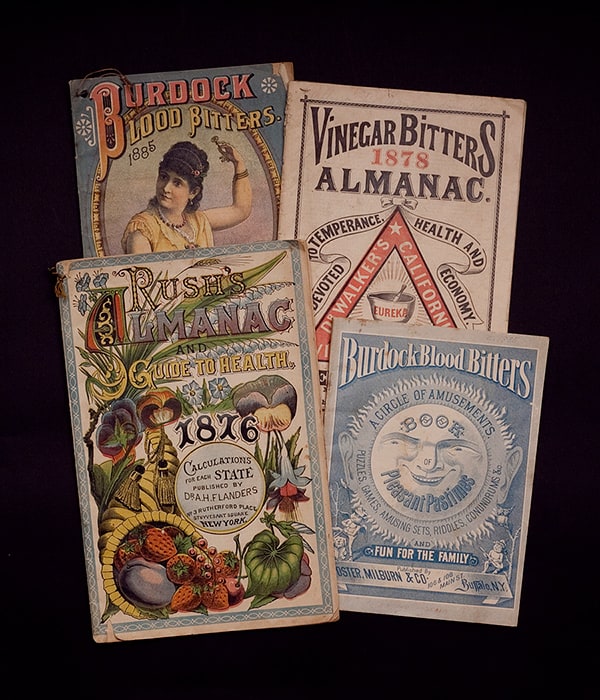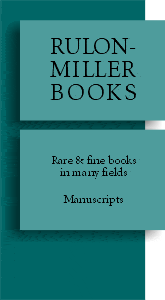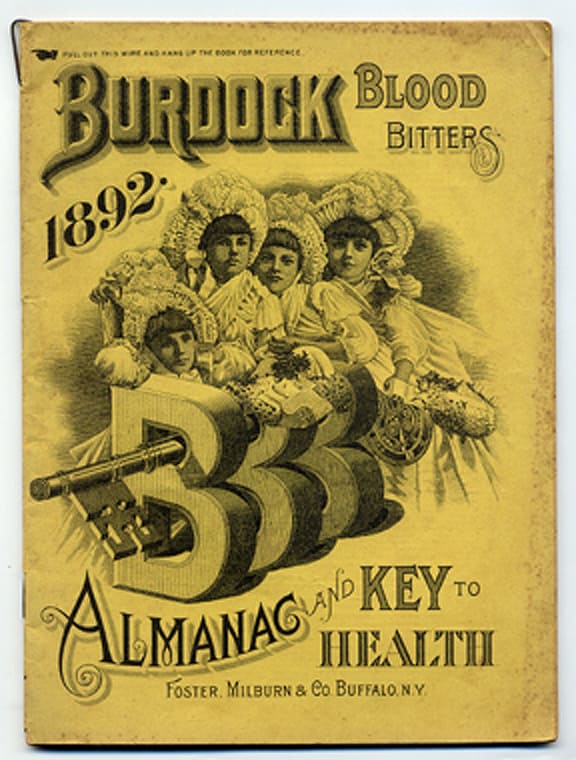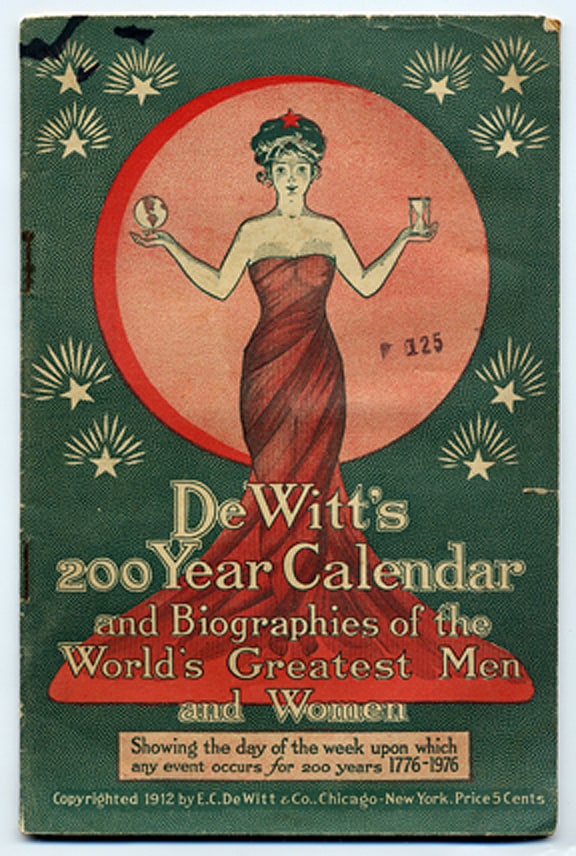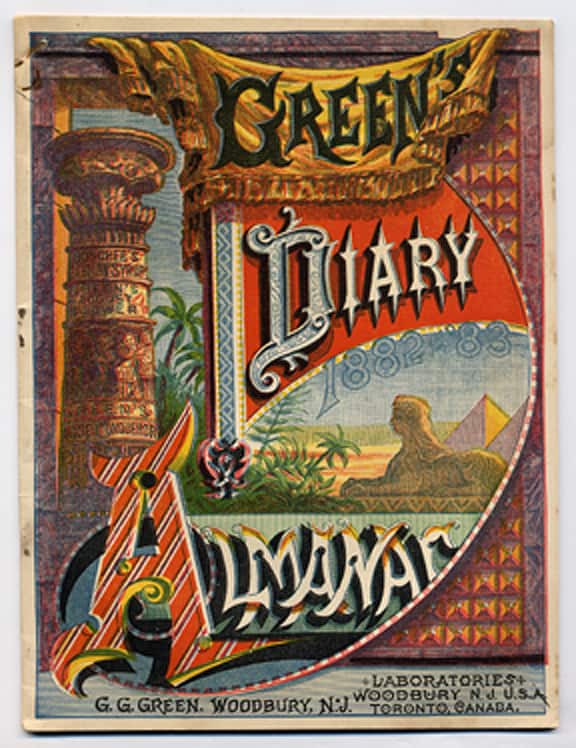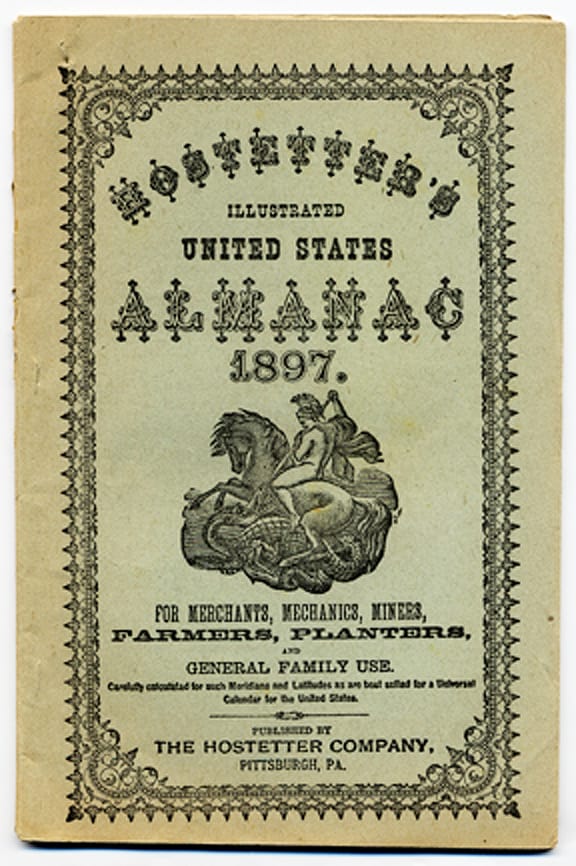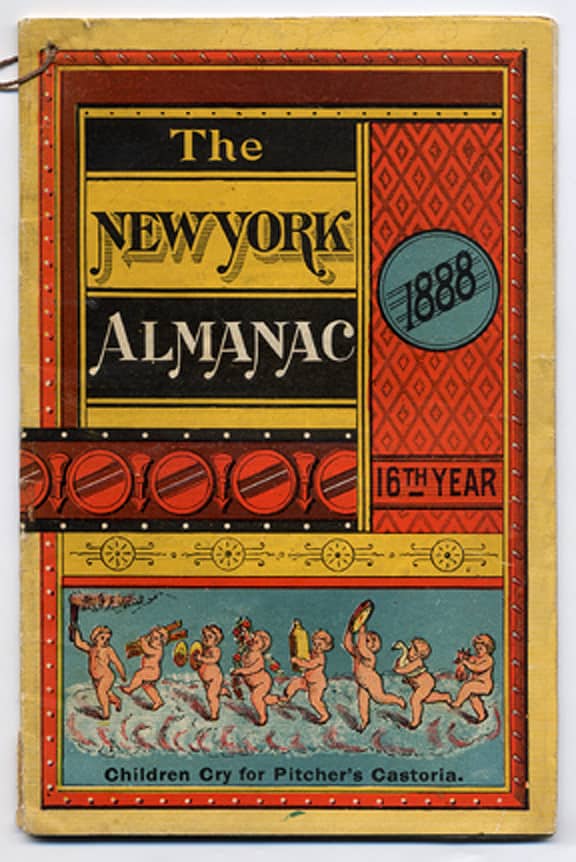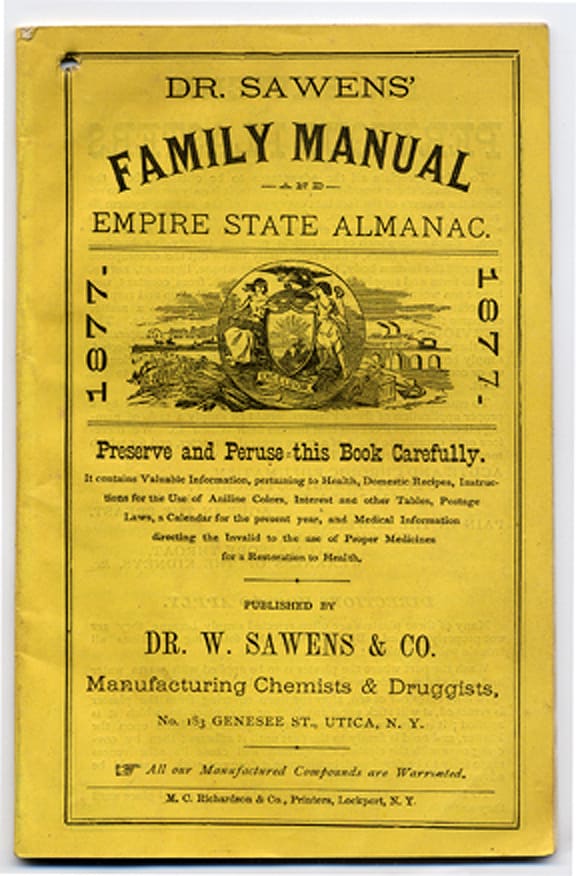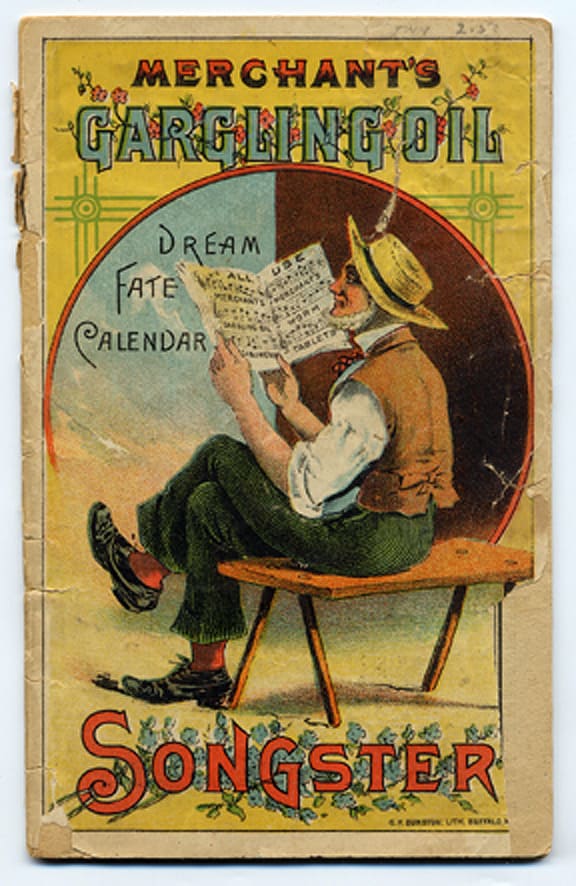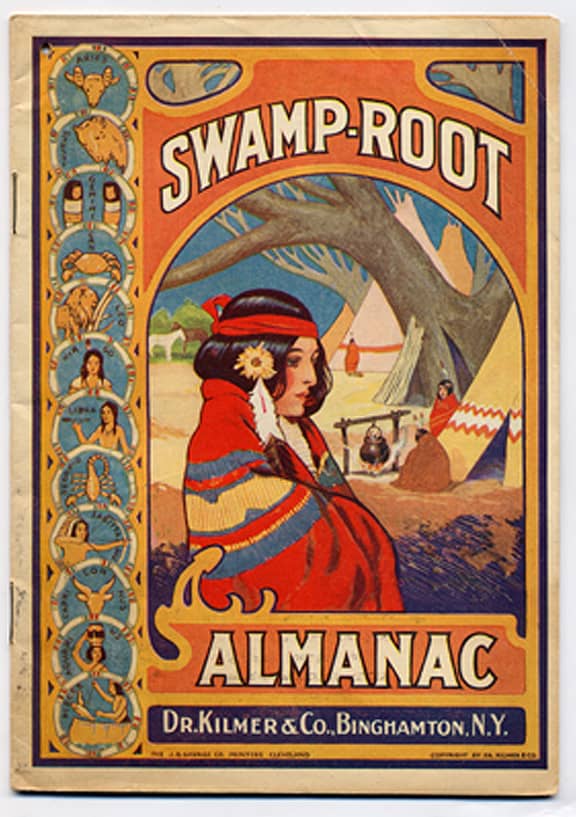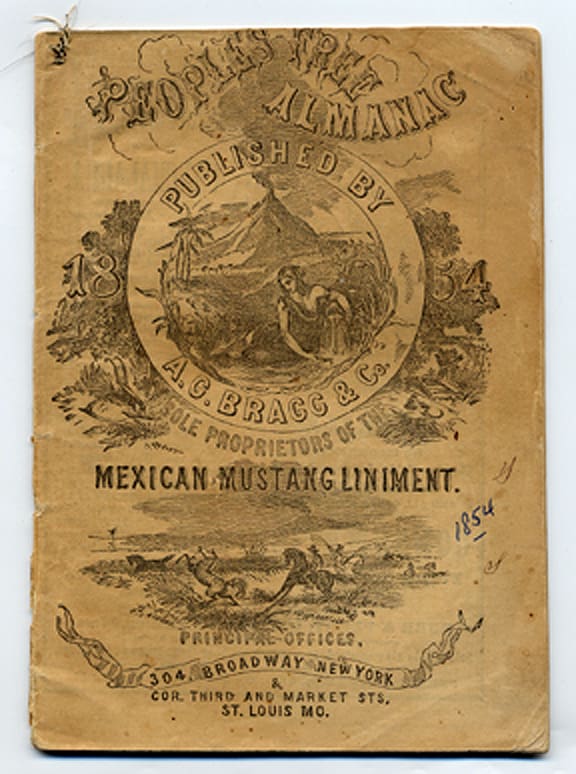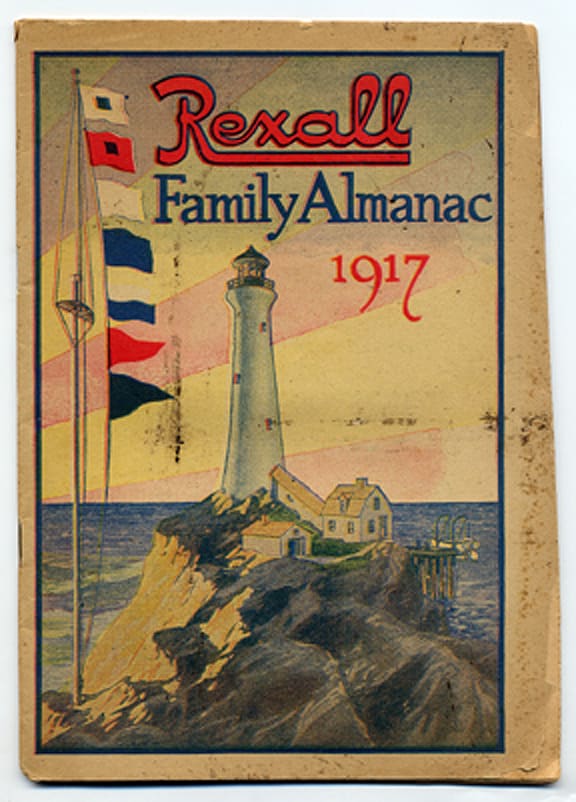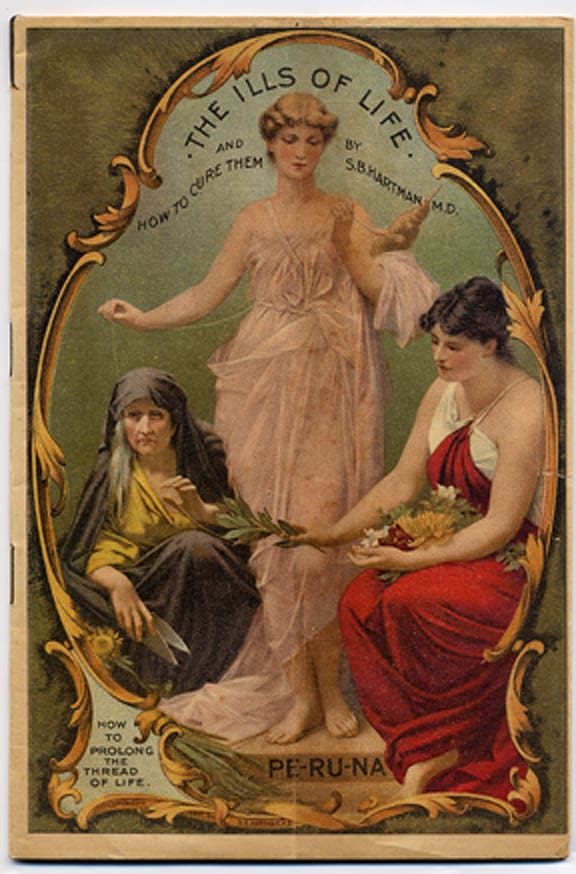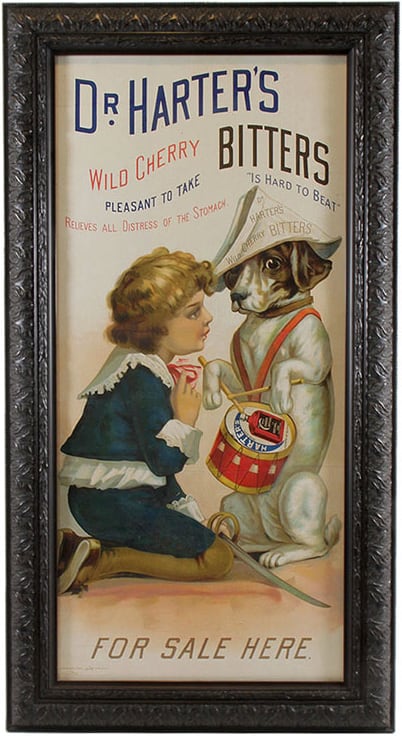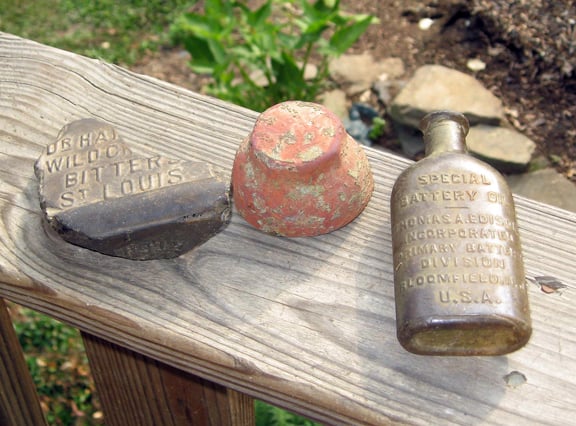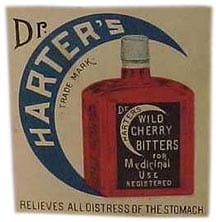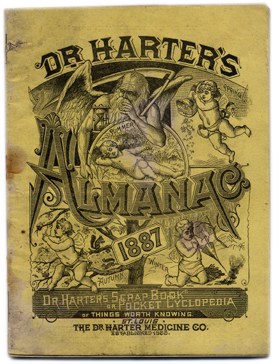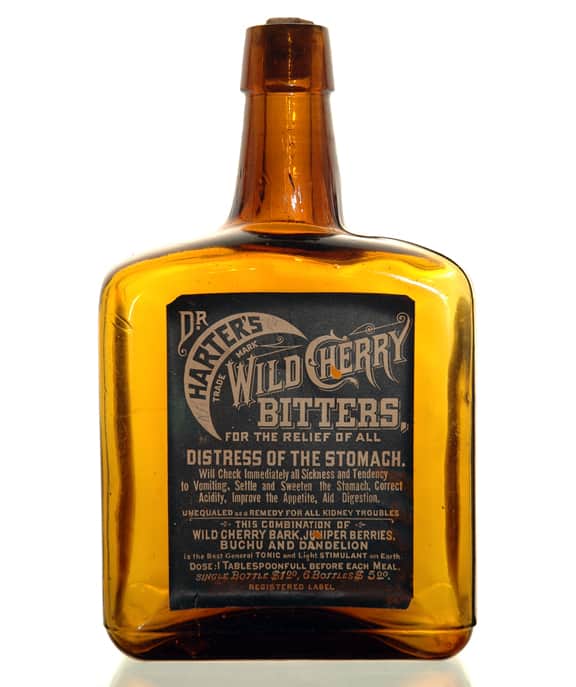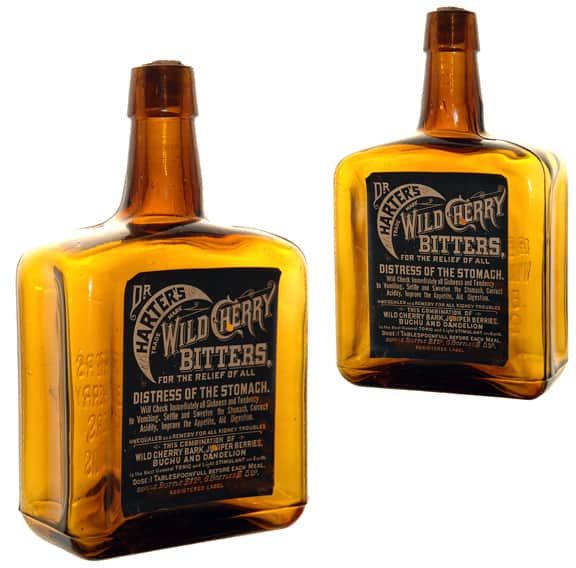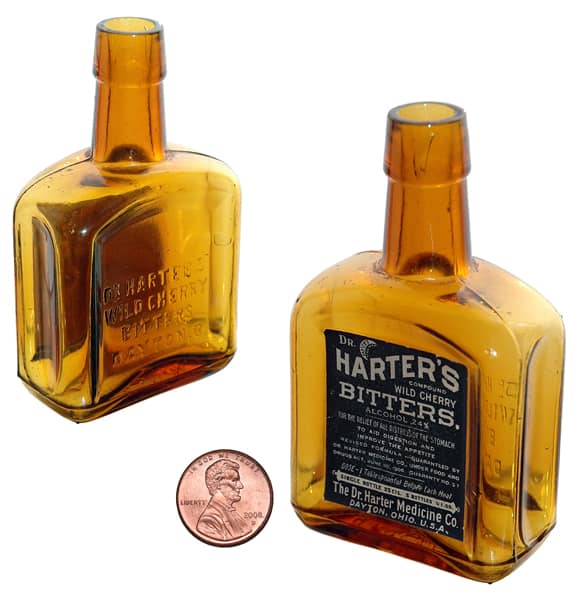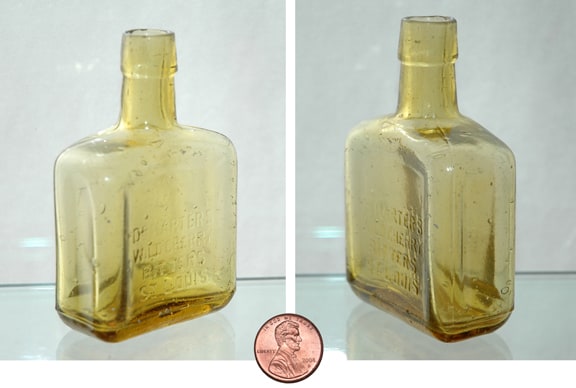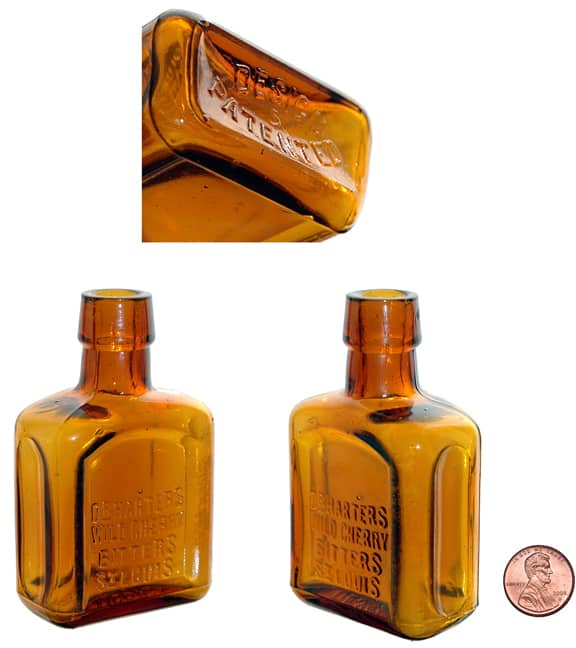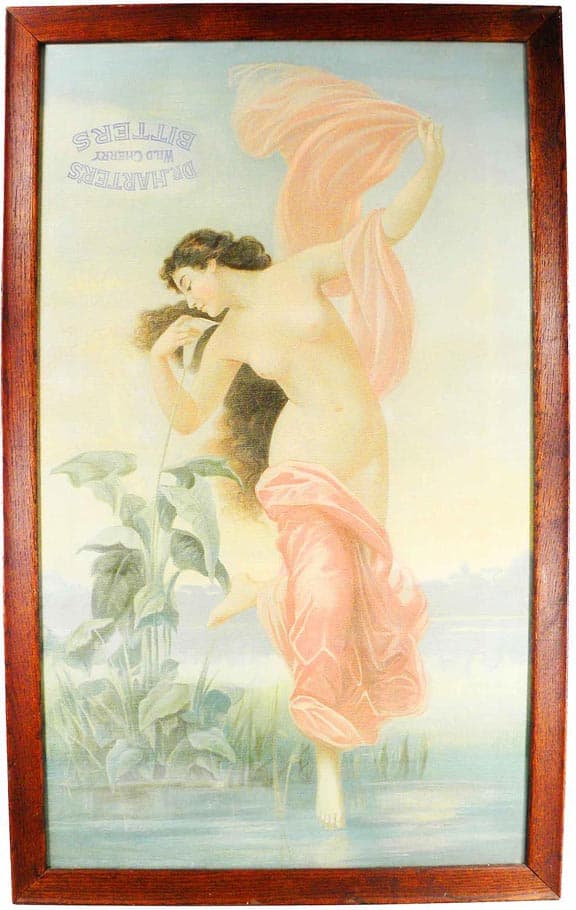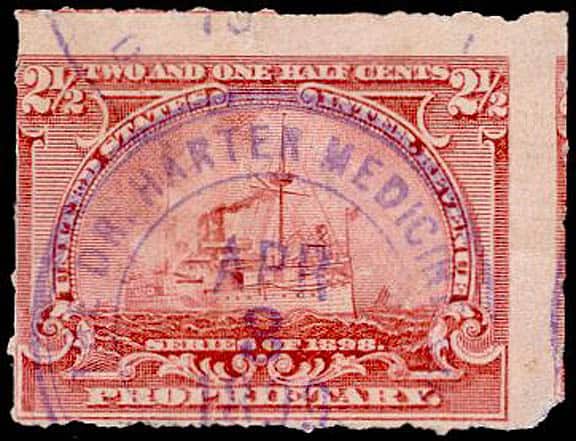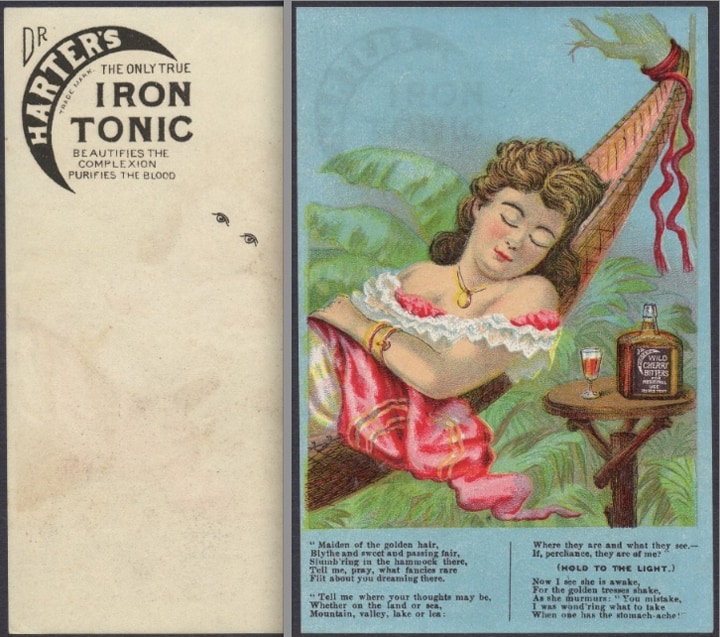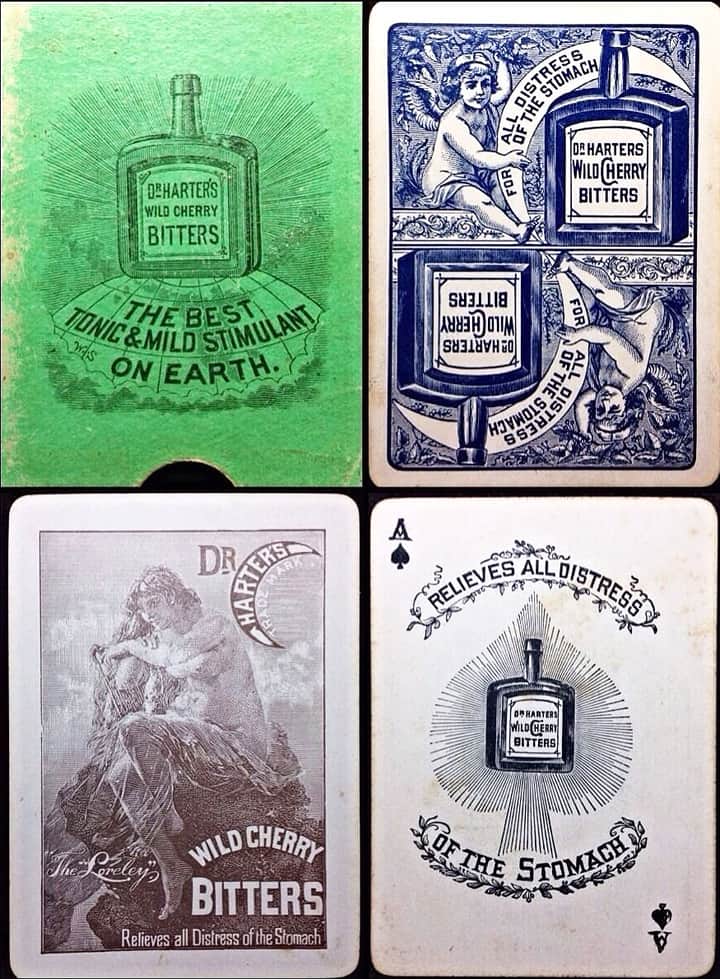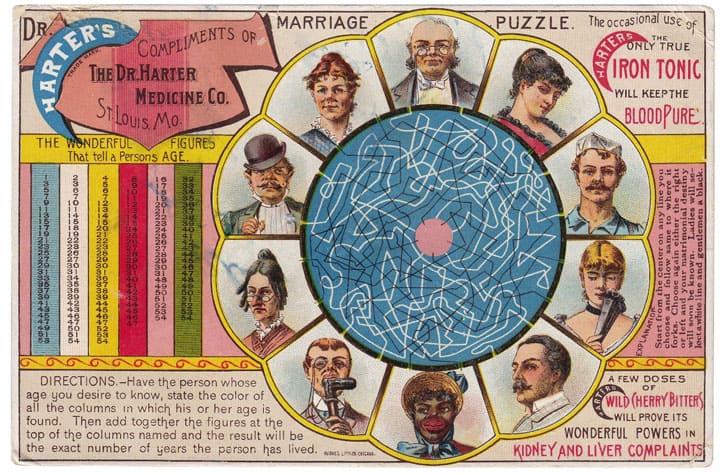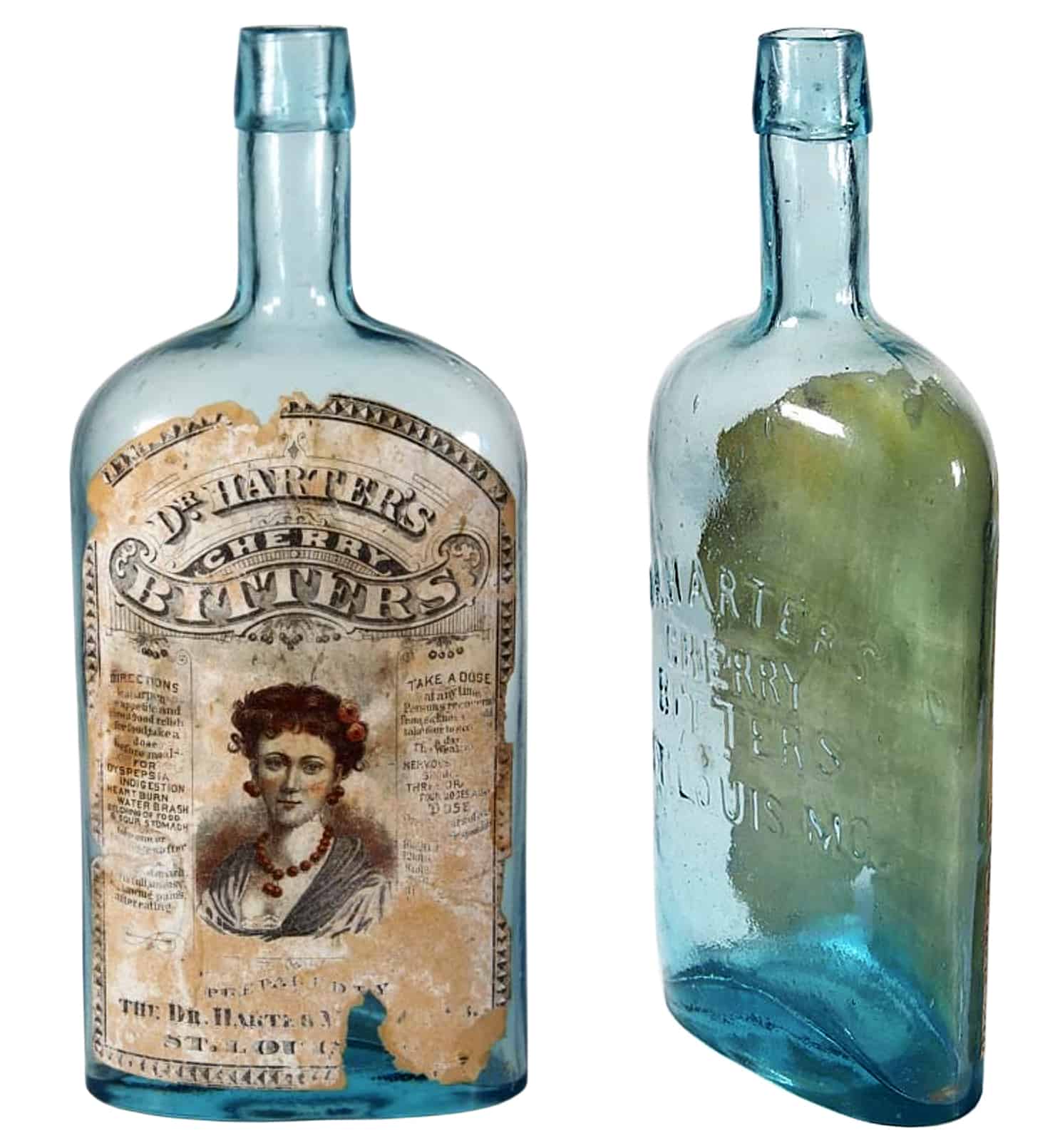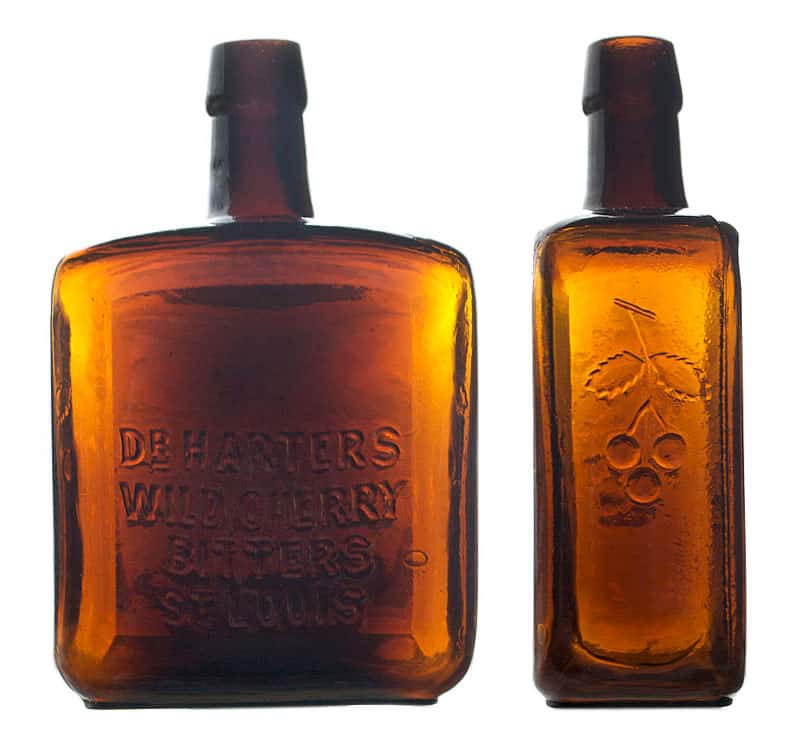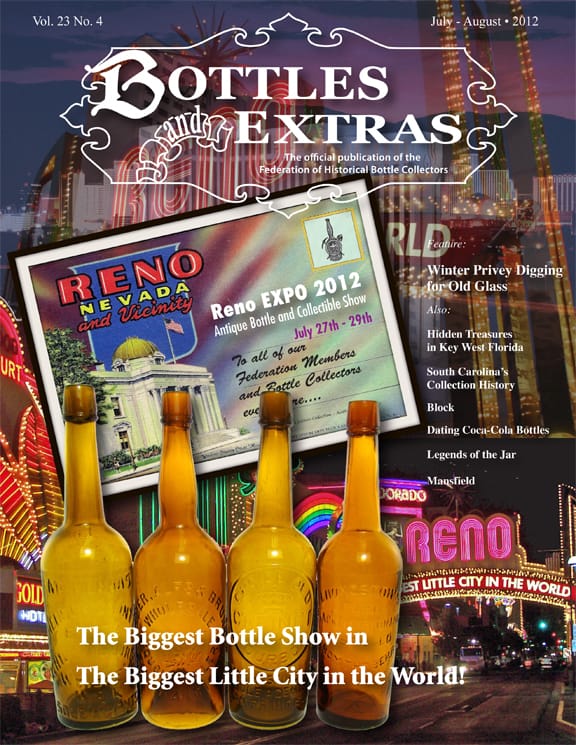Dr. Von Hopf’s Curacoa or Curaco (or Curacao) Bitters
14 June 2012 (R•070414) (R•102914) (R•102015) (R•091416)
![]() It is always exciting to hear and get information about a Bitters bottle that I do not have. In this case it is the recently surfaced (dug) DR. HOPF’S CURACO BITTERS in a yellow amber (pictured below). The bottle is in transit to Peachridge for inspection. The sender noted, “There are quite a few olive streaks running both vertically and horizontally. They REALLY jump out in natural light, especially in the neck. You can see them in the pics. The longest line runs through the length of the neck, curving down and culminating at the “V” in Von. Stunning”.
It is always exciting to hear and get information about a Bitters bottle that I do not have. In this case it is the recently surfaced (dug) DR. HOPF’S CURACO BITTERS in a yellow amber (pictured below). The bottle is in transit to Peachridge for inspection. The sender noted, “There are quite a few olive streaks running both vertically and horizontally. They REALLY jump out in natural light, especially in the neck. You can see them in the pics. The longest line runs through the length of the neck, curving down and culminating at the “V” in Von. Stunning”.
I can see from the pictures that the Carlyn Ring and W.C. Ham number in Bitters Bottles is V 27. I am also very interested to see if this example has an applied top.
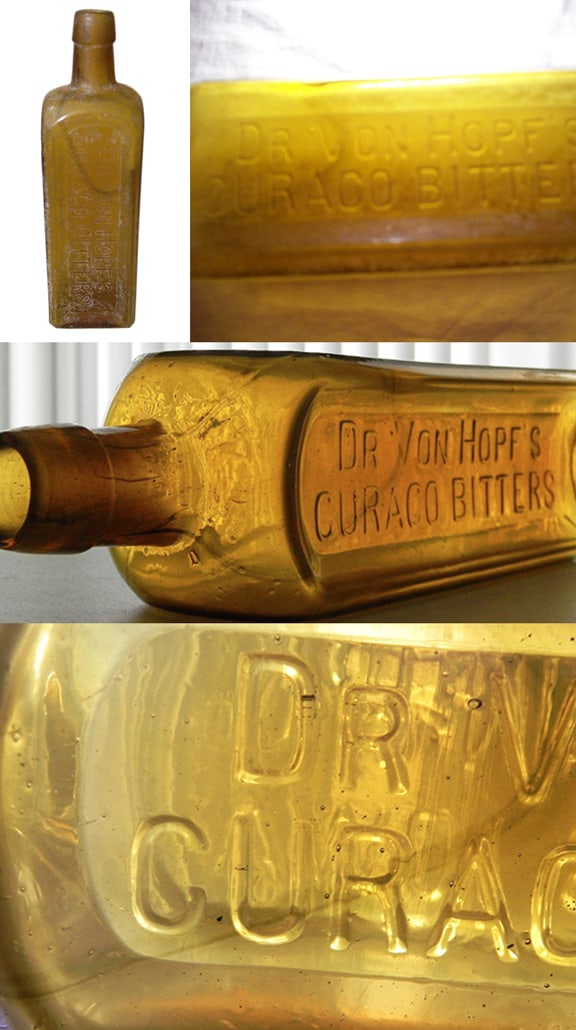
V 27 DR. HOPF’S CURACO BITTERS – Top two represent pictures of the bottle as it appeared on eBay in late 2011. Description as follows. It has a nice applied Trapezoidal Top. There are characteristics consistent with a bottle that has been dug up after many years underground including iridescent staining over most of it’s entirety. If held to the light there appears to be 2 cracks inside the bottle but it may be some staining, I’m not sure. It has whittle marks on the neck and top. I think all of the staining will clean up on this bottle. From the sender: The bottom two pictures show a light cleaning as described. The bottle has not been polished, but I cut it for two days to remove stain and some crazing. A light polish for 2-3 days would give it a high lustre, without causing the orange peel or waxy finish we don’t care for. The embossing was protected, so there was no loss there. There are quite a few olive streaks running both vertically and horizontally. They REALLY jump out in natural light, especially in the neck. You can see them in the pics. The longest line runs through the length of the neck, curving down and culminating at the “V” in Von. Stunning.
I presently have an example of the Dr. Von Hopf’s Curacao Bitters rectangular flask that is numbered V 28 (pictured further below).
“There are quite a few olive streaks running both vertically and horizontally. They REALLY jump out in natural light, especially in the neck. You can see them in the pics. The longest line runs through the length of the neck, curving down and culminating at the “V” in Von. Stunning”
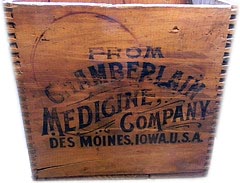 This prompted me look around for more variants and additional information. I have posted what I found below. Please note the different embossing on each bottle and the spelling of CURACO. The alternate spelling on some of the bottles is CURACOA. The liquer spelling, that we are familiar with, is Curacao.
This prompted me look around for more variants and additional information. I have posted what I found below. Please note the different embossing on each bottle and the spelling of CURACO. The alternate spelling on some of the bottles is CURACOA. The liquer spelling, that we are familiar with, is Curacao.
According to Wikipedia: Curaçao s a liqueur flavored with the dried peel of the laraha citrus fruit, grown on the island of Curaçao. A non-native plant similar to an orange, the laraha developed from the sweet Valencia orange transplanted by Spanish explorers. The nutrient-poor soil and arid climate of Curaçao proved unsuitable to Valencia cultivation, resulting in small bitter fruit on the trees. But the aromatic peel maintained much of the essence of the Valencia varietal, and the trees were eventually bred into the current laraha cultivar, whose fruits remain inedibly bitter.
The drink was first developed and marketed by the Senior family (an old Caribbean family of Spanish Jewish descent) in the 19th century. To create the liqueur the laraha peel is dried, bringing out the sweetly fragranced oils. After soaking in a still with alcohol and water for several days, the peel is removed and other spices are added.
The liqueur has an orange-like flavor with varying degrees of bitterness. It is naturally colorless, but is often given artificial coloring, most commonly blue or orange, which confers an exotic appearance to cocktails and other mixed drinks. Blue color is achieved by adding of food colorant, most often E133 Brilliant Blue. High-end Curaçaos, like Grand Marnier, are based on cognac (or other aged spirits), giving the Curaçao a natural rust-orange color.
Some other liqueurs are also sold as Curaçaos with different flavors added, such as coffee, chocolate, and rum and raisin.
Chamberlain Medicine Company
There are two distinct bottles made by Chamberlain Medicine Company. One is a square and the other is the more common flask, both being made in various shades of amber. There are three distinct variations of the flask and two varieties of the square bottle.
[from The Antique Bottles of Iowa, 1846- 1915, by Burggraaf & Southard, 1998.]
You can tell the difference in Chamberlain bottles by the embossing used. Mainly, those bottles having the Chamberlain & Co. embossing date from 1882 to 1892 while the bottles that are embossed Chamberlain Medicine Company date after 1892. All of the Chamberlain bottles can be dated this way except for the bitters. After the name change in the company in 1892, all of the bottles ordered were embossed with the new company name while the bitters bottles retained the old Chamberlain & Co. embossing.
The difference in the two different eras can be identified by several subtle details. On the flasks, the earlier examples have a diagonal hinge mold base mark while the newer examples have the typical style base seen on bottles manufactured during the 1890s up to 1910. The earlier flasks also have a definite raised panel effect on the front panel while the newer examples do not. The older flasks may also have a slightly cruder applied or gloppy top as opposed to the more perfect tooled tops of the newer flasks. A new discovery in 2001 produced perhaps the first flask used by the Chamberlain & Co. firm in Des Moines. The embossing is identical to the early amber flasks including the hinge mold base mark. This example however is aqua and has a crude, gloppy lip that would ordinarily make you think it was an 1860s bottle, but of course could only be dated to 1882 at the earliest.
The age difference in the squares can be identified by similar traits found in the flasks. The earlier squares have the older base mark and applied tops and more variation in color while the newer examples are more uniform with little variation in the amber coloration.
Overall, the flasks seem to outnumber the squares by at least a five to one
I guess my biggest surprise was the postal history and covers that I found online for Chamberlain Medicine Company. The number of their products expanded greatly and sales reached to an international scale, for the company had branches in Australia, South Africa and Canada (see postal covers below).
[from Australian Postal History and Social Philately]
As the state of Iowa grew so did the businesses and industries. In the spring of 1872, Lowell Chamberlain moved to Marion, Iowa to engage in the druggist trade. He formed a partnership with Dr. Norman Owen who had practiced in Marion since 1863, establishing the firm of Owen & Chamberlain producing various patent medicines for local sale. In 1882, Davis Chamberlain bought out Dr. Owen’s share and the 2 brothers moved to Des Moines, establishing what would become the largest patent medicine business in Iowa. In 1892 the name of the firm was changed from Chamberlain & Co. to Chamberlain Medicine Company.
By 1900 the company was flourishing in a large new plant located at 702 Sixth Avenue, Des Moines. The number of products expanded greatly and sales reached to an international scale, for the company had branches in Australia, South Africa and Canada. In the early 1900s the Sydney branch of the company published a sixteen page booklet about Stomach Diseases – Alternative treatment, a copy of which is held at the National Library of Australia.
About 1910 Davis bought the business from Lowell, and Davis also built the Chamberlain Hotel in Des Moines (see postcard picture below). Around 1925, Davis Chamberlain sold the Chamberlain Medicine Company to St. Louis, Missouri interests, retaining only the Chamberlain Golden Touch Lotion.
A copy of Chamberlain’s Almanac in 1923 advertised popular products such as Chamberlain’s Cough Remedy, Chamberlain’s Liniment and Chamberlain’s Pain Balm. The bottles and containers for many of the Chamberlain Medicine Co. can be found on the internet, including a pre-1892 Chamberlain & Co. ‘Diarrhoea Remedy for colic, cholera and ( ); Chamberlain’s Cough Remedy for Coughs, Colds, Croup, Sore Throat; Chamberlain’s Eye & Skin Ointment priced at 25 cents for sore eyes, tetters, ring worm, scald head, barber’s itch, piles, burns, scalds, frostbites, chilblains, frozen feet, sore nipples, chapped hands , chronic sores, and for diseases of horses, etc; and, Chamberlain’s Pain-Balm, a liniment for external use only for Rheumatism, neuralgia, sciatica, lame back, lumbago, gout, etc.
V 27 DR VON HOPF’S CURACOA BITTERS, Circa 1880s & 90s
f // DR VON HOPF’S / CURACOA BITTERS // f // CHAMBERLAIN & CO / DES MOINES IOWA // f //
9 1/4 x 2 3/4 (6 3/4) 1/4
Square, Amber, LTC, Tooled lip, 2 sp, Scarce
Drug Catalogs: 1887 MP small & large, 1901-2 JP&K Co.
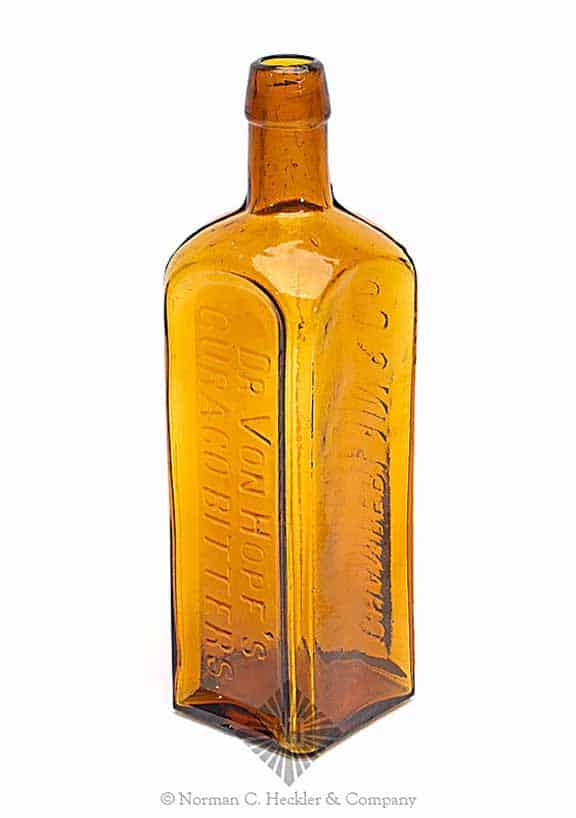
“Dr Von Hopf’s / Curaco Bitters” – “Chamberlain & Co / Des Moines Iowa” Bitters Bottle, America, 1860-1880. Square with beveled corners, brilliant yellow amber, tooled sloping collared mouth – smooth base, ht. 9 1/2 inches; (1/8 inch flake from mouth edge). R/H #V-27 Beautiful bright color. Bold embossing. Generally fine condition. – Heckler Premier Auction #141
V 28 DR VON HOPF’S CURACOA BITTERS, Circa 1890
f // DR VON HOPF’S // CHAMBERLAIN & CO / DES MOINES / IOWA // CURACOA BITTERS //
7 1/2 x 3 1/4 x 1 1/2 (5)
Lettering on raised panels
Rectangular, Amber, LTC, Tooled lip, Common
Drug Catalogs: 1896 -7 and 1901-2 JP&K Co
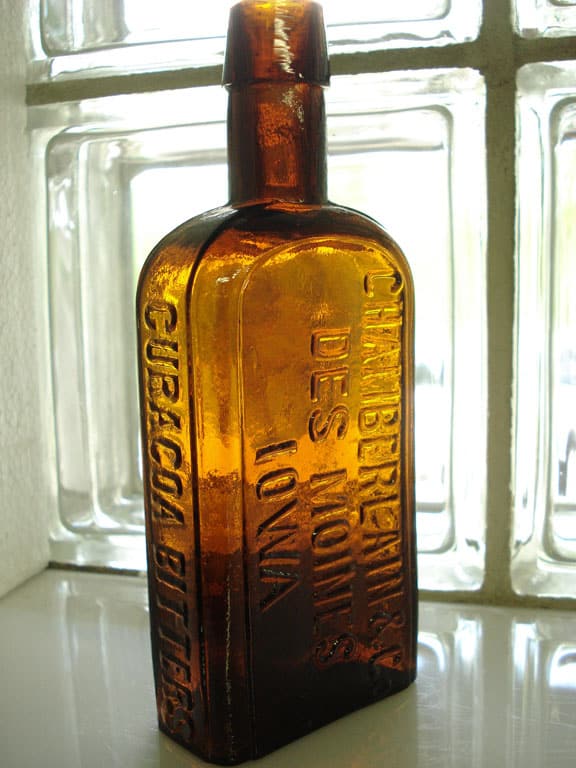
V 28 DR VON HOPFS CURACOA BITTERS – Meyer Collection (I added this bottle after the post. Look at the great character. Applied top too. Could be one of the best out there. Thanks to Jeff Burkhardt)
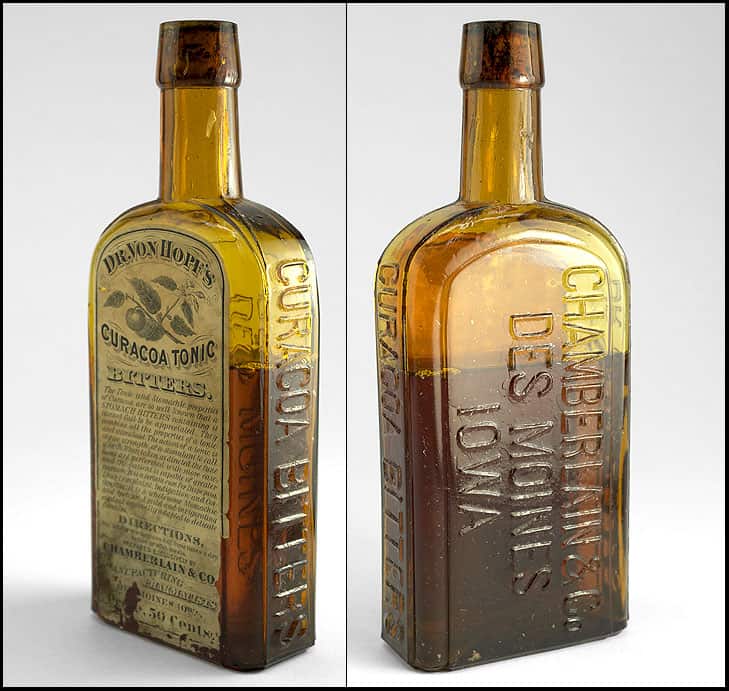
“DR VON HOPFS – CURACOA BITTERS – CHAMBERLAIN & CO / DES MOINES / IOWA”, (Ring/Ham, V-28), Iowa, ca. 1880 – 1895, yellow amber, 7 7/8”h, smooth base, tooled mouth, 95% original label and contents. The bottle is perfect. A common bottle but we have never sold one with label and contents. – Glass Works Auctions
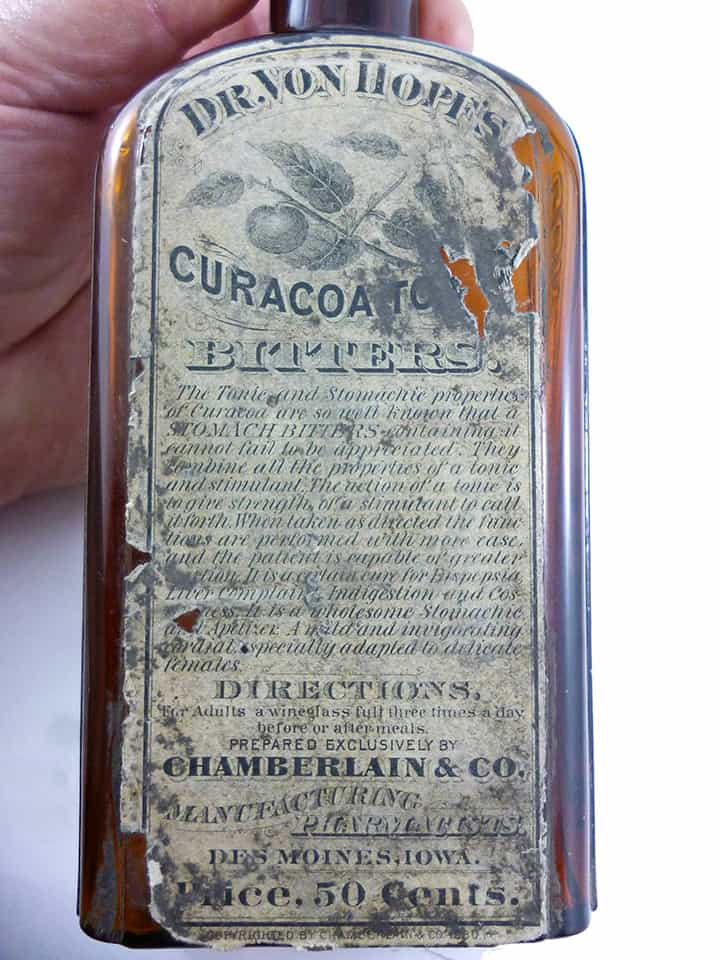
What is interesting is that the label reads Dr. Von Hopf’s Curacao Tonic Bitters…but the embossing on the bottle reads Dr. Von Hopf’s Curacao Bitters. – Marlena VanHelsing
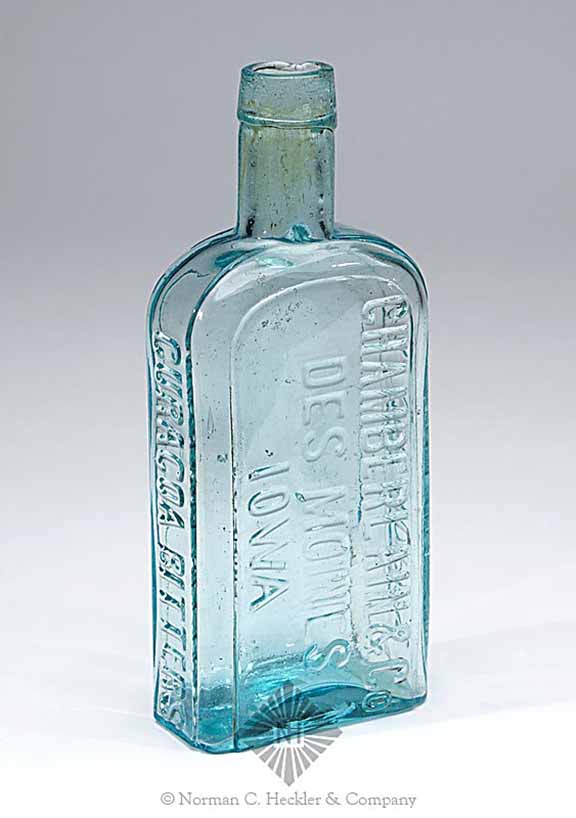
“Dr. Von Hopfs / Curacoa Bitters / Chamberlain & Co / Des Moines / Iowa” Bitters Bottle, America, 1870-1890. Rectangular with strap sides and rounded corners, aquamarine, applied sloping collared mouth – smooth base, ht. 7 3/8 inches; (professionally cleaned, potstone near reverse base has two radiating legs and loss of surface glass). R/H #V-28 One of two known examples in this rare, unlisted color. – Heckler Premier Auction #141.
V 29 DR VON HOPF’S CURACOA BITTERS, Circa 1870’s
DR VON HOPF’S // CURACOA BITTERS // f // O & C / MARION / IOWA // f //
O & C – full size, Marion, Iowa – half as large
O & C. – stands for Owens and Chamberlain
9 1/4 x 2 3/4 (6 3/4) 1/4
Square, Amber, LTC, 2 sp, Extremely rare
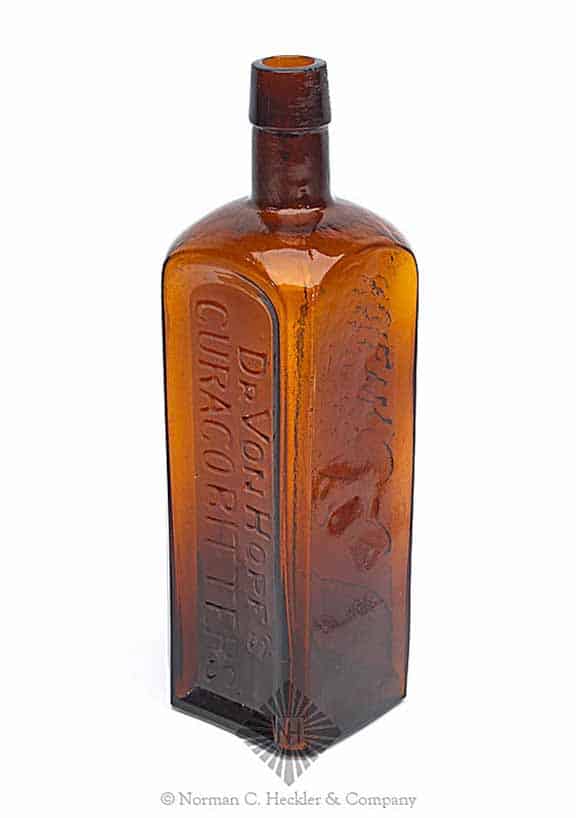
“Dr Von Hopf’s / Curaco Bitters” – “O & C Marion / Iowa” Bitters Bottle, America, 1860-1880. Square with beveled corners, medium amber, applied sloping collared mouth – smooth base, ht. 9 1/8 inches; (areas of heavy scratching and roughness on mouth, neck and shoulder). R/H #V-29 Listed as extremely rare. Bold embossing. – Heckler Premier Auction #141

“Dr Von Hopf’s / Curaco Bitters” – “O & C Marion / Iowa” Bitters Bottle, America, 1860-1880. Square with beveled corners, medium amber, applied sloping collared mouth – smooth base, ht. 9 1/8 inches; (areas of heavy scratching and roughness on mouth, neck and shoulder). R/H #V-29 Listed as extremely rare. Bold embossing. – Heckler Premier Auction #141
Directory of Marion City – 1878 Linn County History
Dr. Norman W. Owens and his medical career; an earnest student of analytical yet comprehensive mind, he became a pioneer in the discovery of new remedies for human ailments and while he formulated and compounded many preparations now of common use, his greatest achievement was the discovery and composition of Owen and Chamberlain’s now Chamberlain’s Colic, Cholera and Diarrhea Remedy, a world wide panacea, of which Dr. Owen’s was the sole and undisputed originator. This alone places him among the “immortals” in the realm of medicine. He died in Marion in 1880. This, then, is the original and oldest of the Dr. Von Hopf’s.
It is likely that V 29, as listed in the original book, was inaccurate. It seems the addition of O & C makes the description complete as the bottle with the initials fits the rest of the description.
V 29.9 DR VON HOPF’S CURACOA BITTERS
DR VON HOPF’S // O & C / MARION / IOWA // CURACOA BITTERS
7 3/4 x 3 1/4 x 1 5/8 (5 3/4)
Rectangular, Clear, LTC, Scarce
Lettering reads base to shoulder
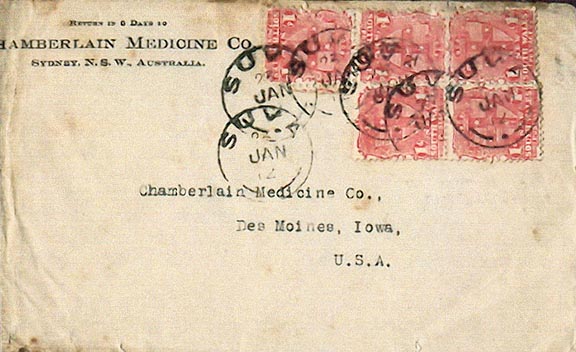
The cover is unusual in that it appears to have originated at the Chamberlain Medicine Co. Sydney, N.S.W., Australia, the block of five red 1d ‘N.S.W. Shield’ stamp has been cancelled SUVA/ 23/ JAN 12/ (FIJI) and it has been addressed to the Chamberlain Medicine Co., Des Moines, Iowa, U.S.A. There were no cancellations on the reverse. – Australian Postal History and Social Philately
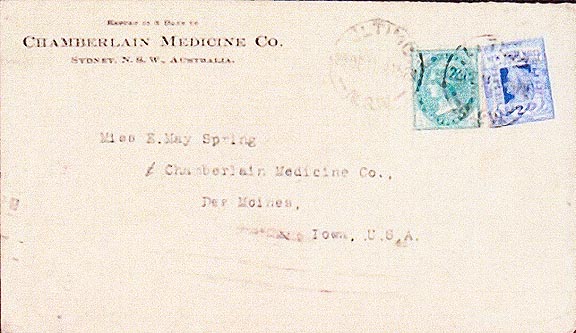
The second cover has the identical return address and the green ½d and blue 2d N.S.W. stamps have been cancelled in a suburb of Sydney ULTIMO/ 2( ) DE 11 4 15 P/ N.S.W. It is addressed to Miss E. May Spring, c/ Chamberlain Medicine Co., Des Moines, Iowa, U.S.A. – Australian Postal History and Social Philately
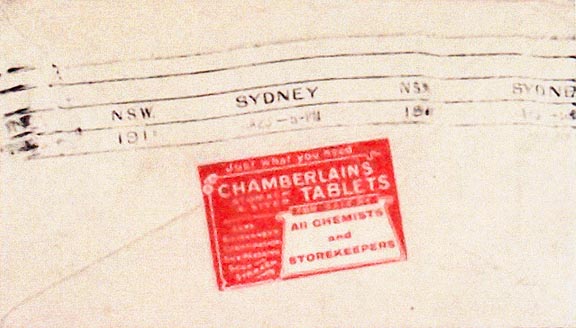
The reverse of the cover pictured above has a roller cancel SYDNEY, NSW, 1911 and a red label is stuck on the flap and reads in part: Just what you need/ CHAMBERLAIN’S TABLETS/ Stomach & Liver/ For Sale By/ ALL CHEMISTS and STOREKEEPERS – Australian Postal History and Social Philately
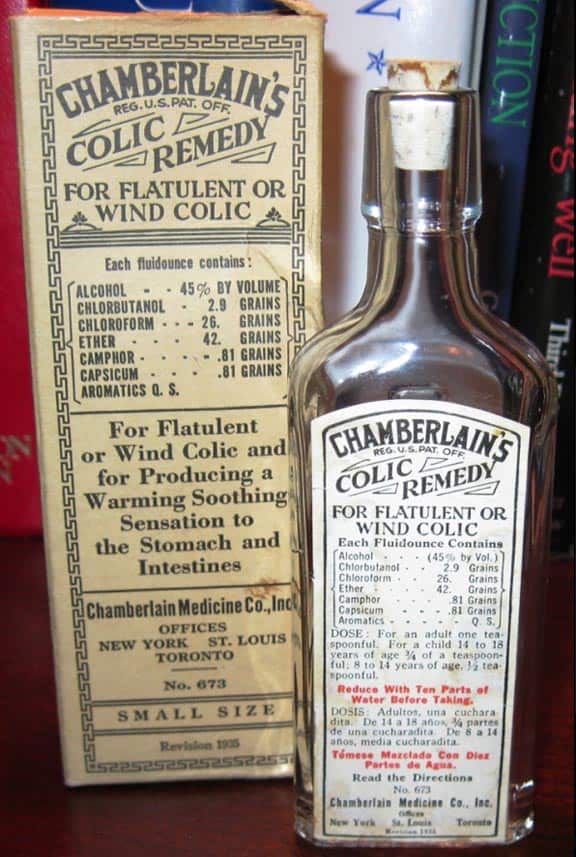
Posted on Civil War Medicine (and Writing) by Jim Schmidt – Here are some photos of the latest addition to my patent/quack medicine collection: Chamberlain’s Colic Remedy (c. 1935). The medicine was introduced in the 1880’s by the Chamberlain Medicine Co. of Des Moines, Iowa. It seems to have been sold into the 1940’s. There are several reports in the early 1900’s to this medicine and it is not hard to see why. The ingredients included 45% alcohol, ether, chloroform, and chlorbutanol (1930’s)…earlier formulations included narcotics such as morphine.

